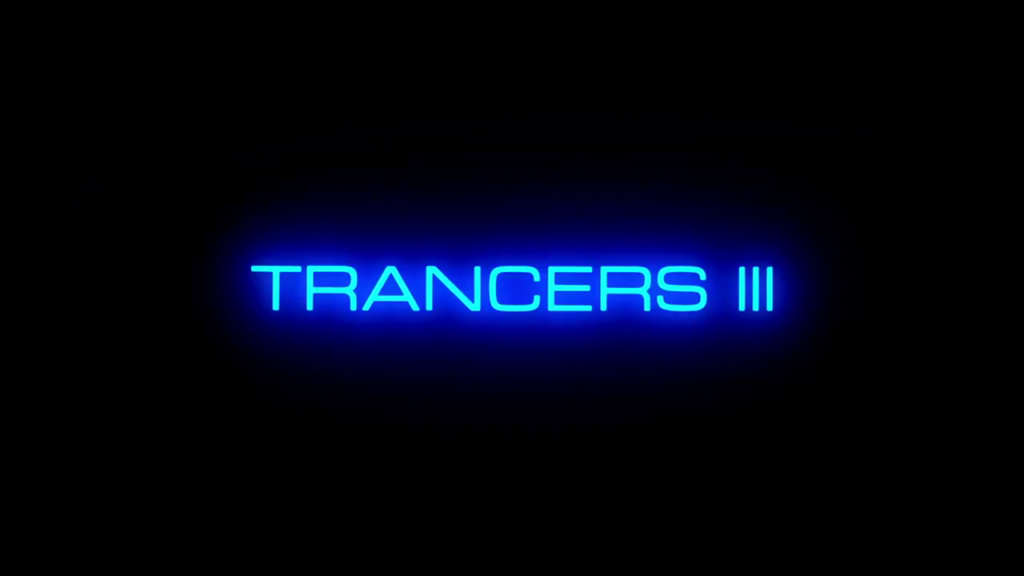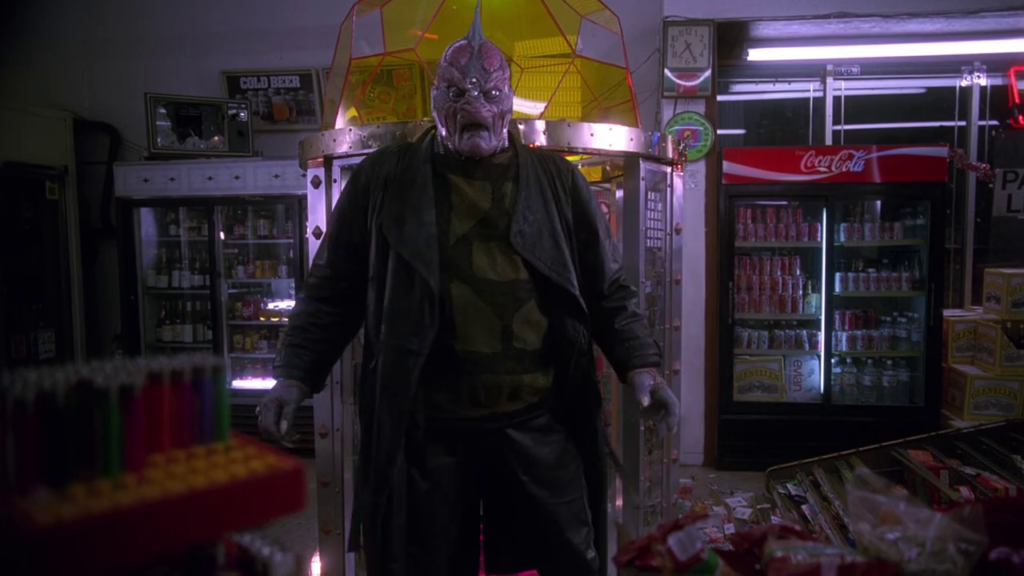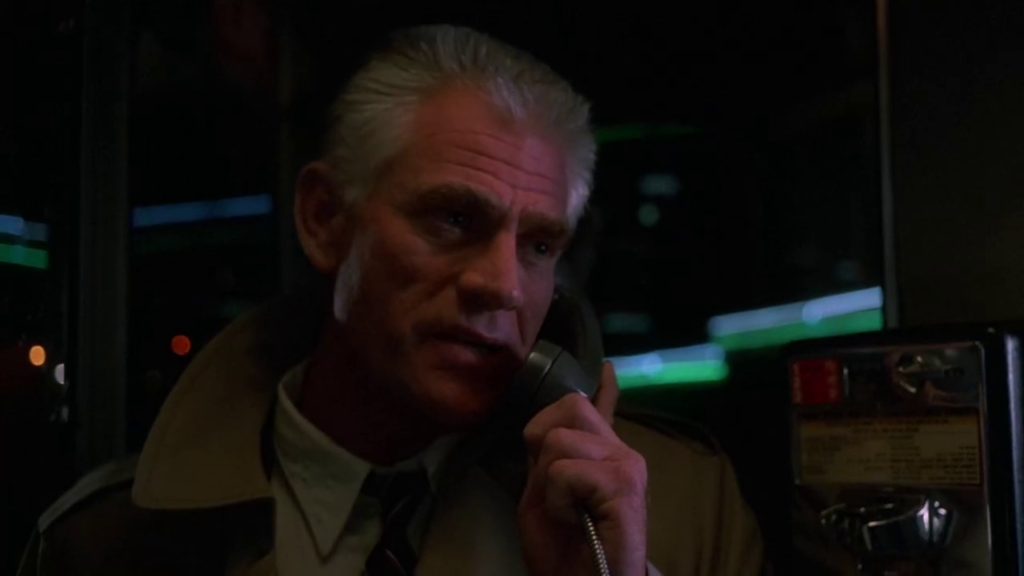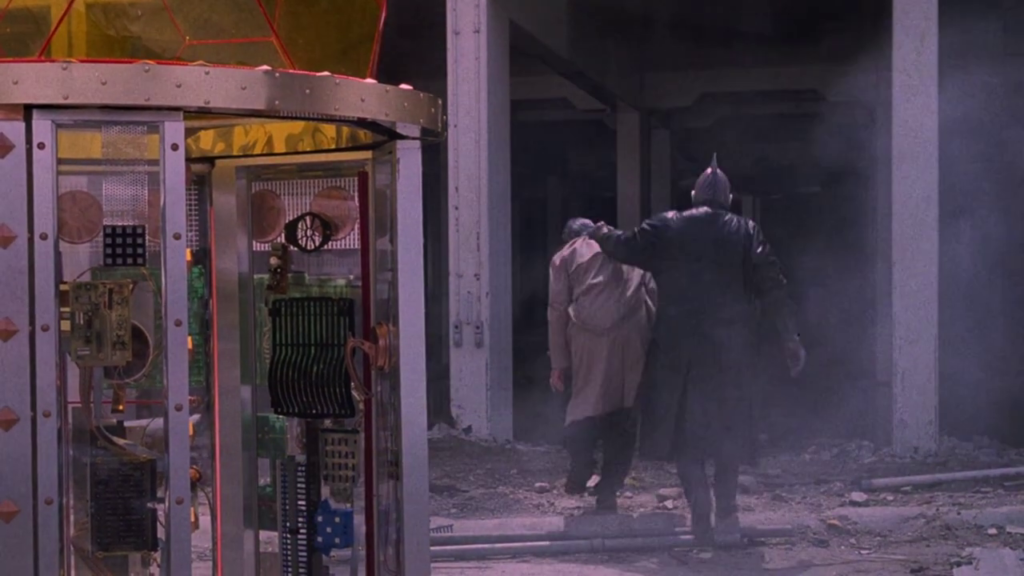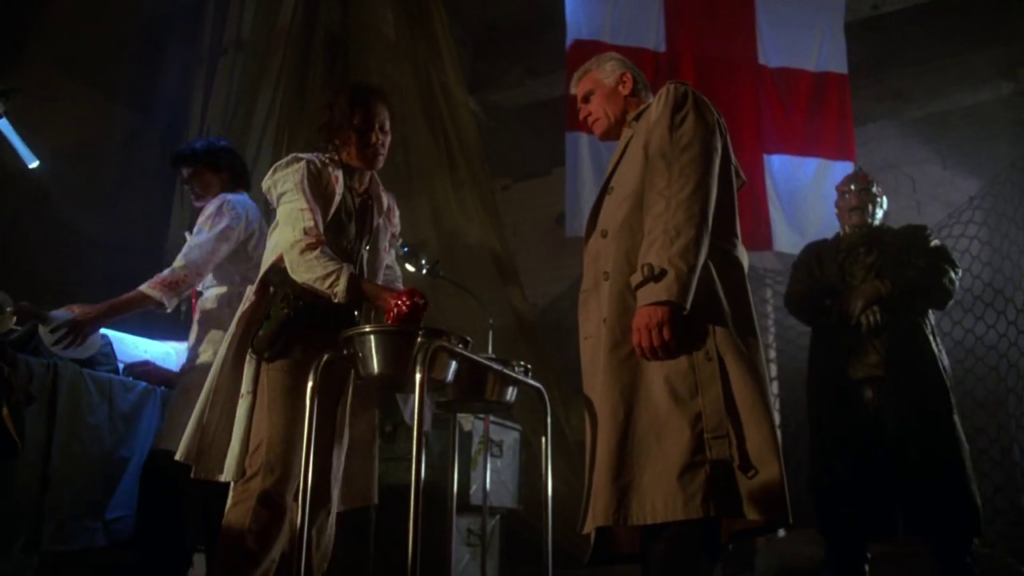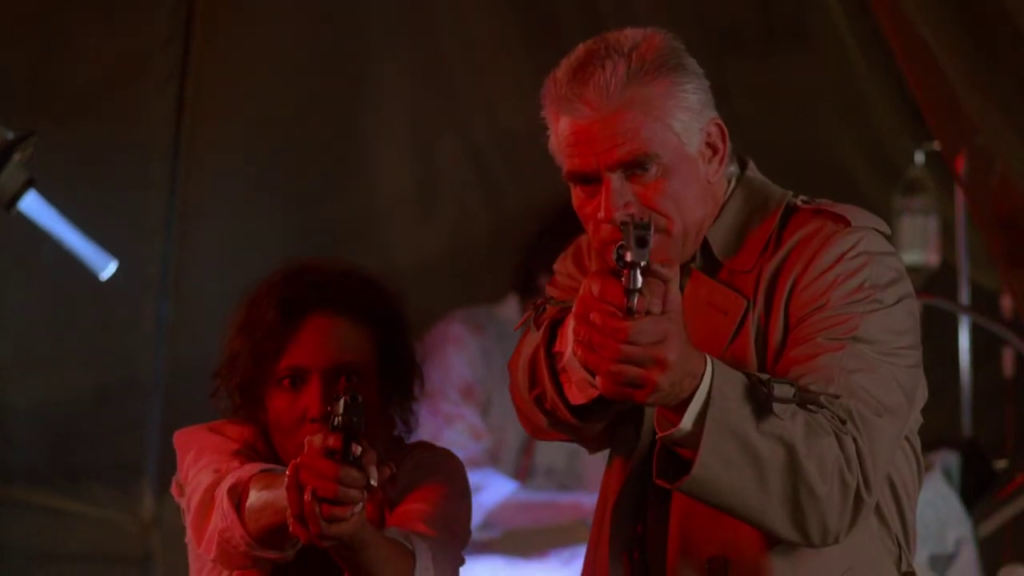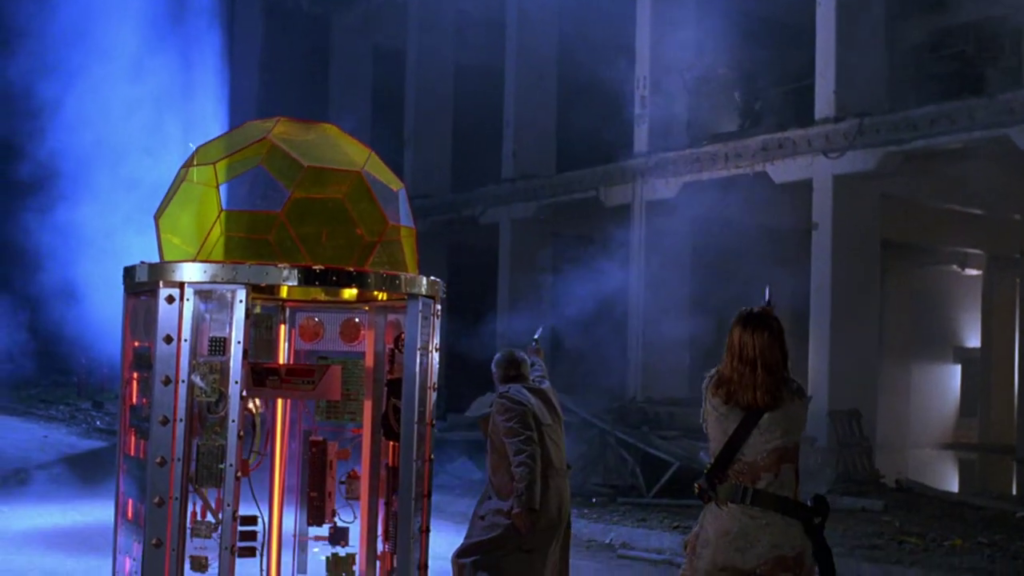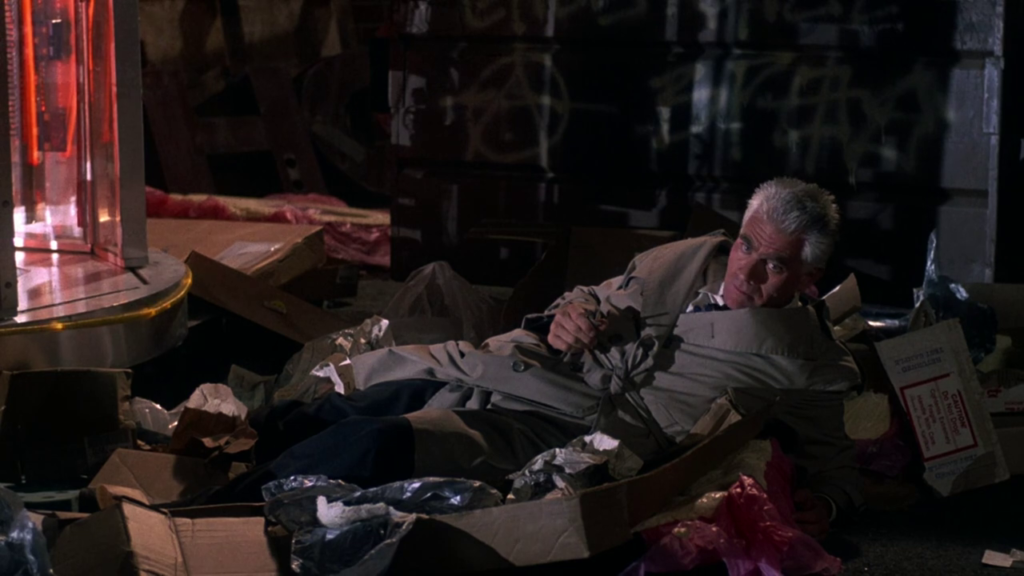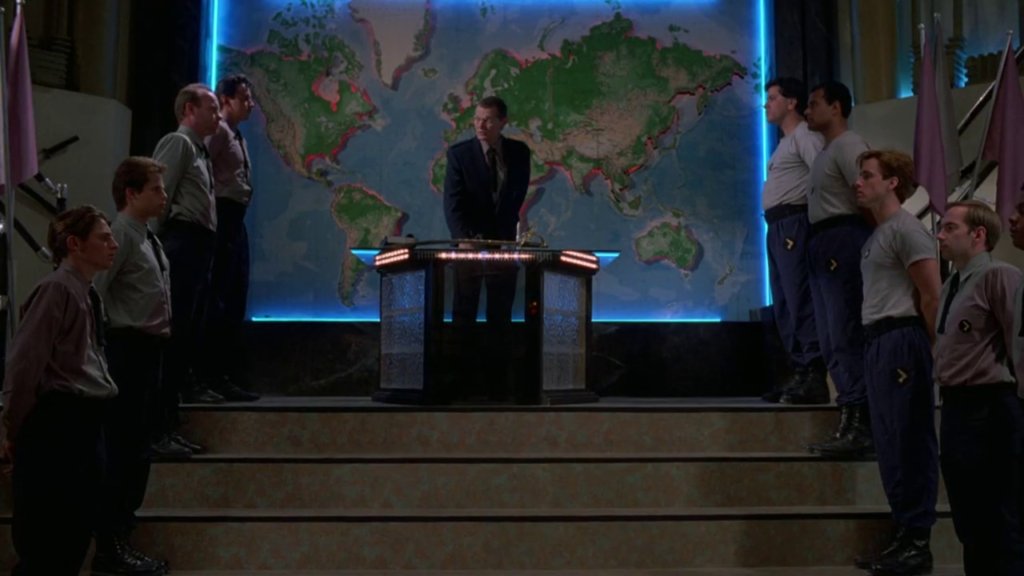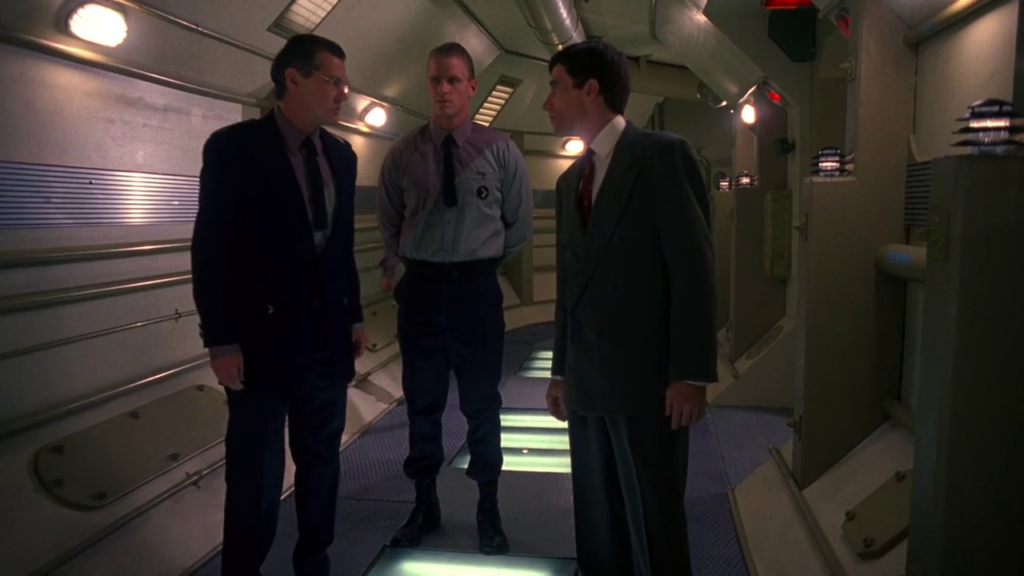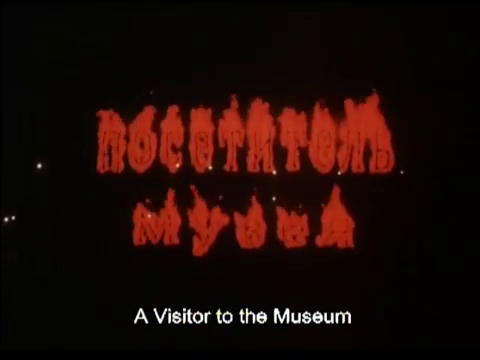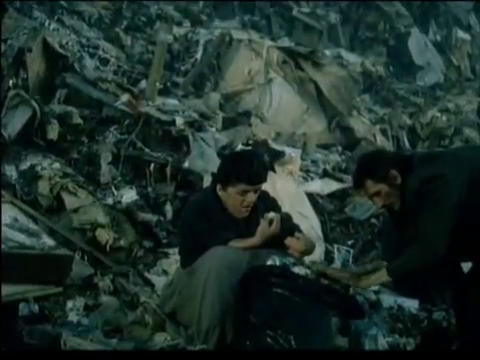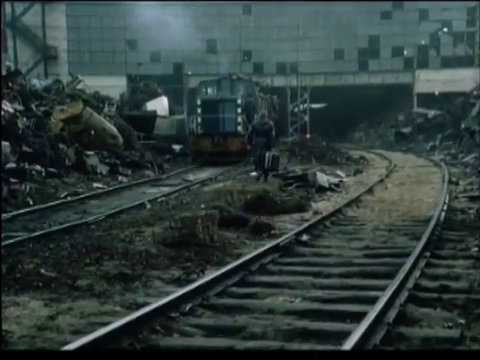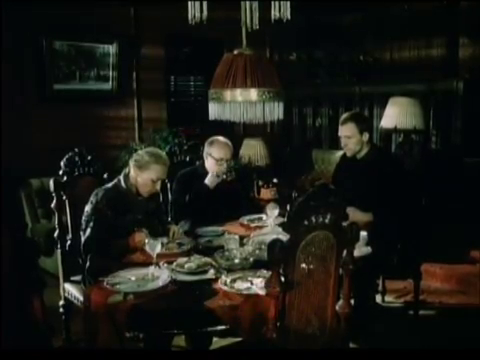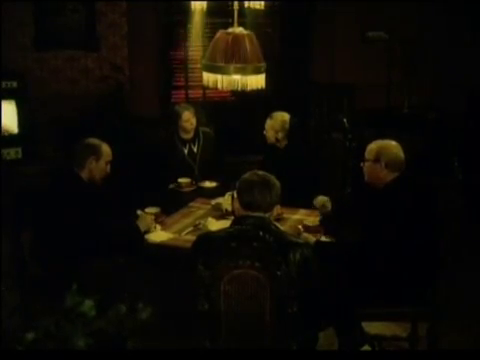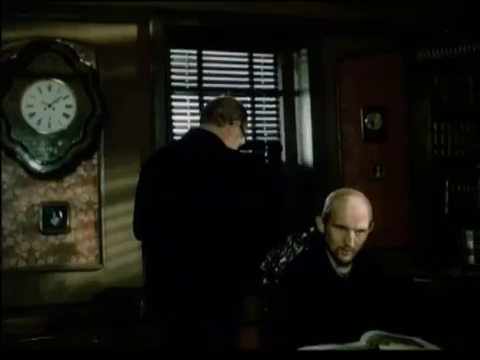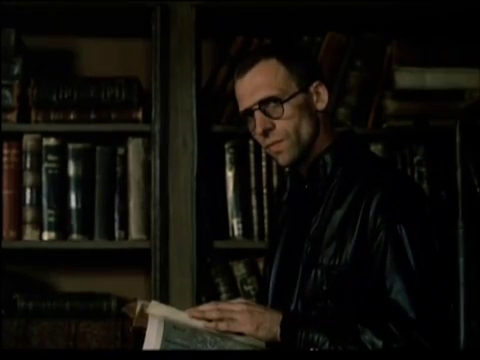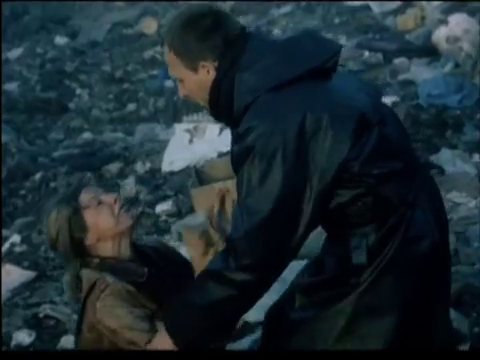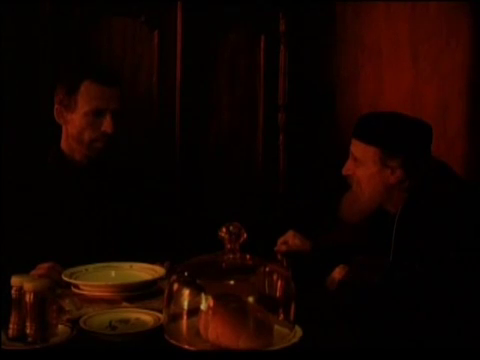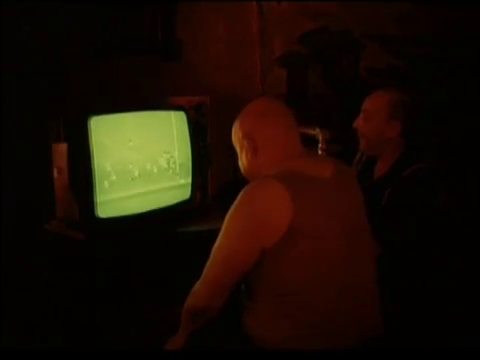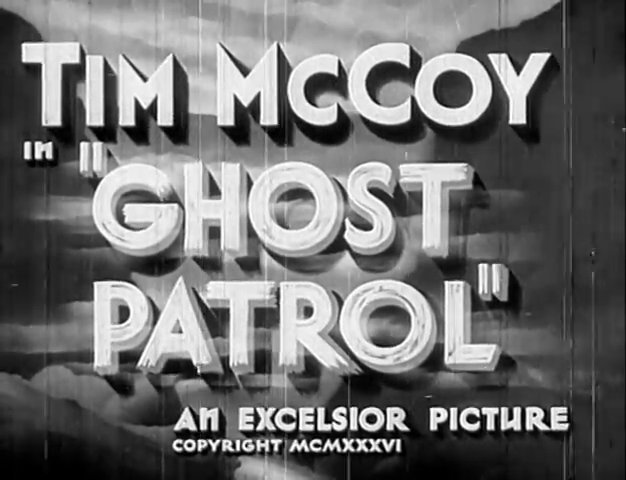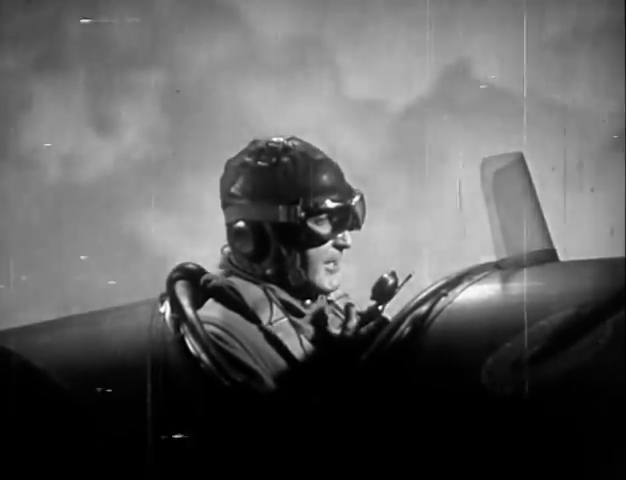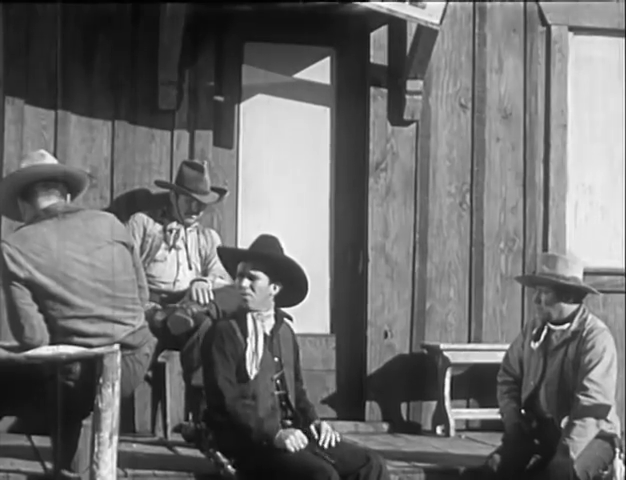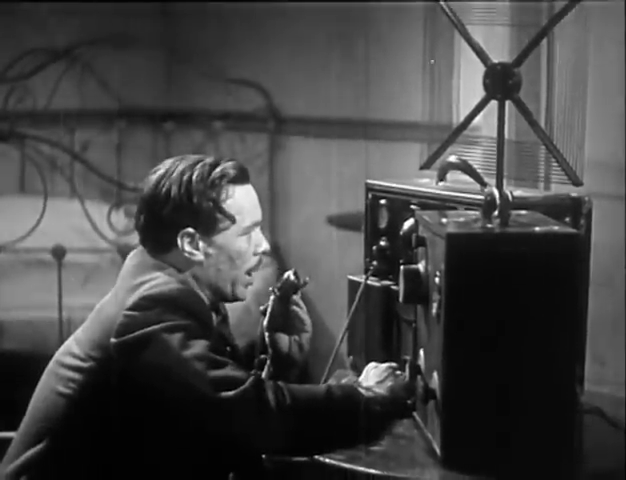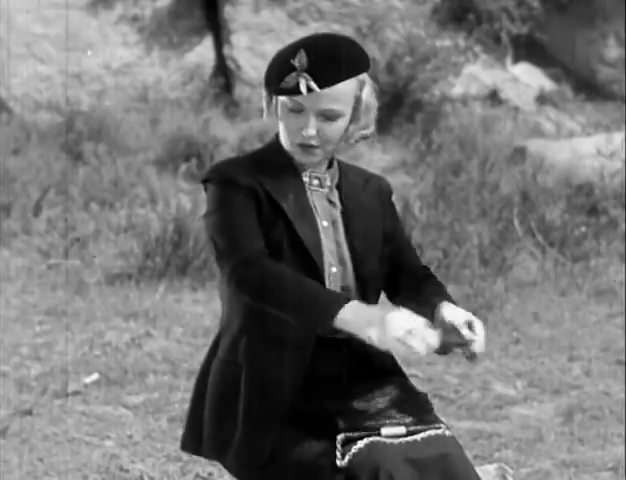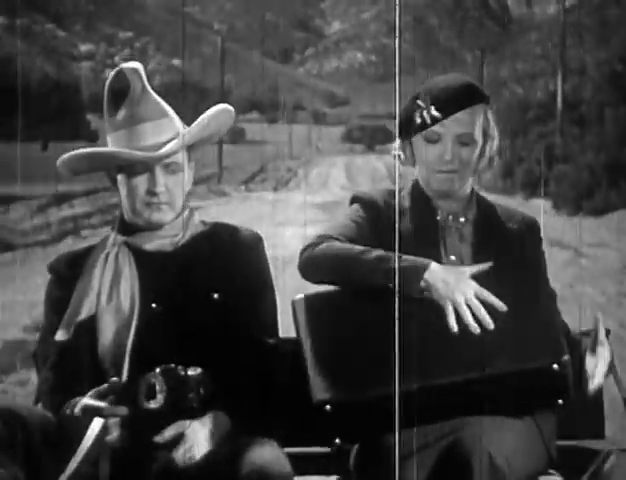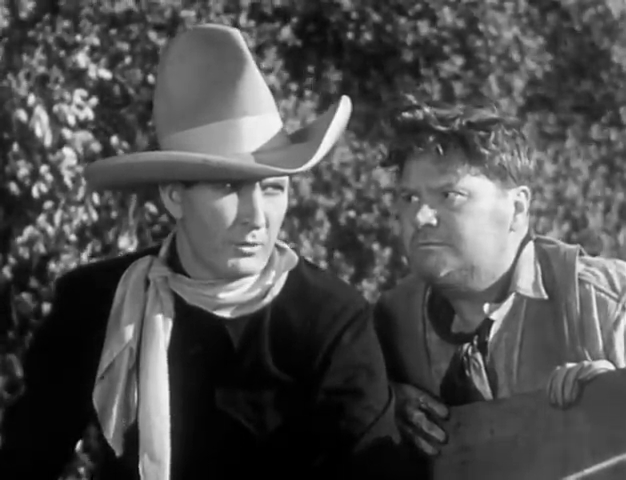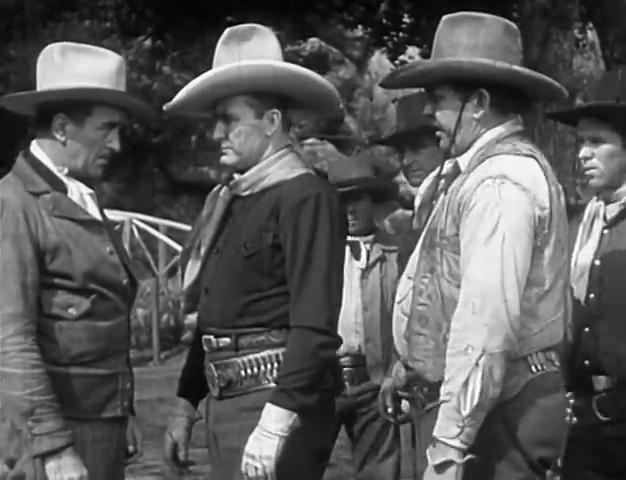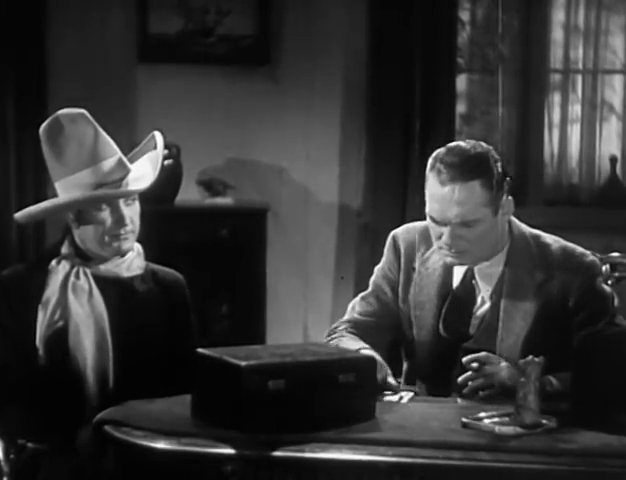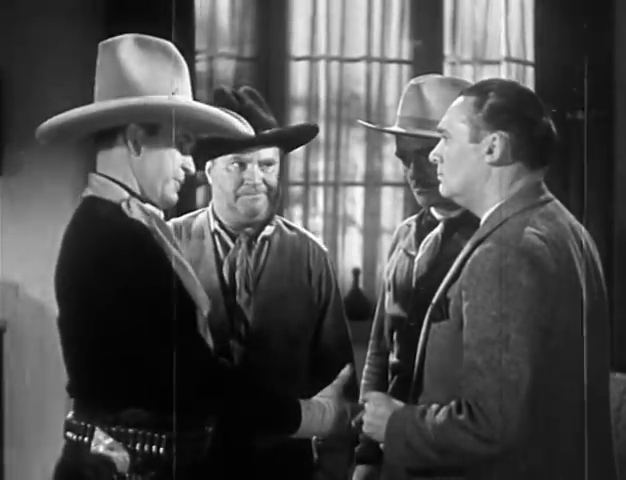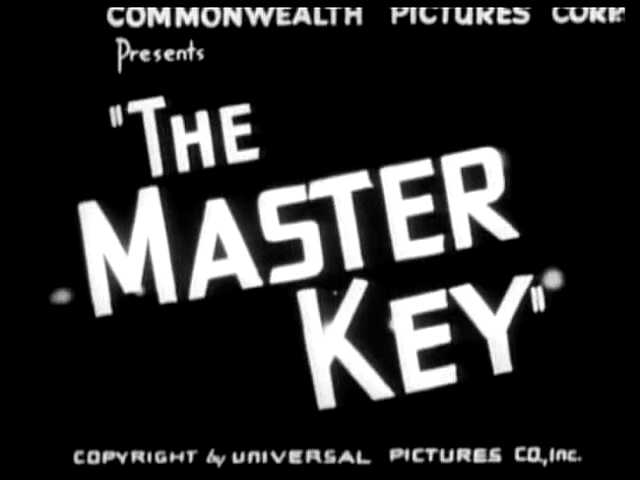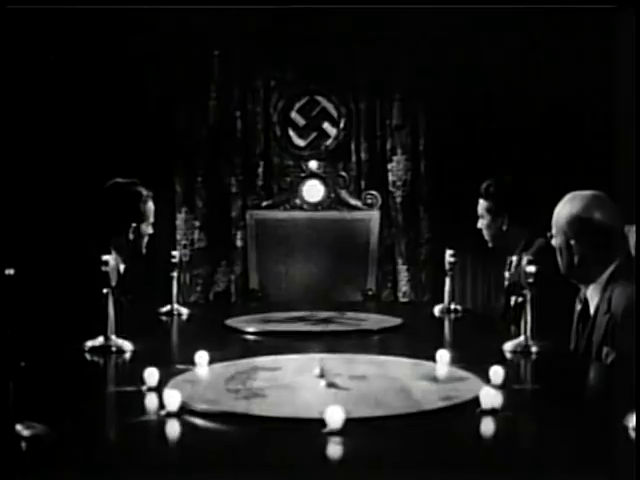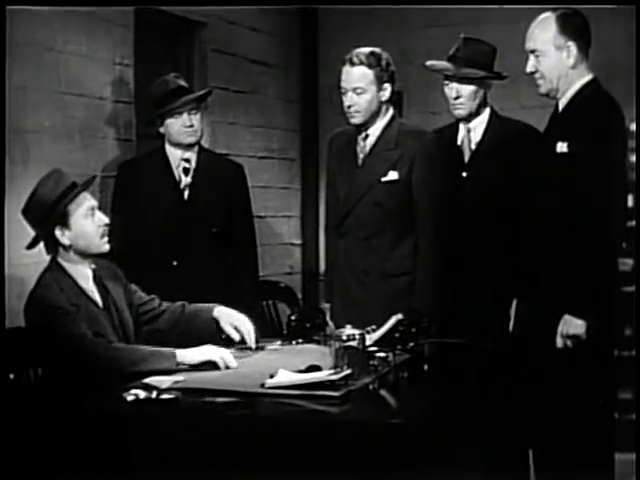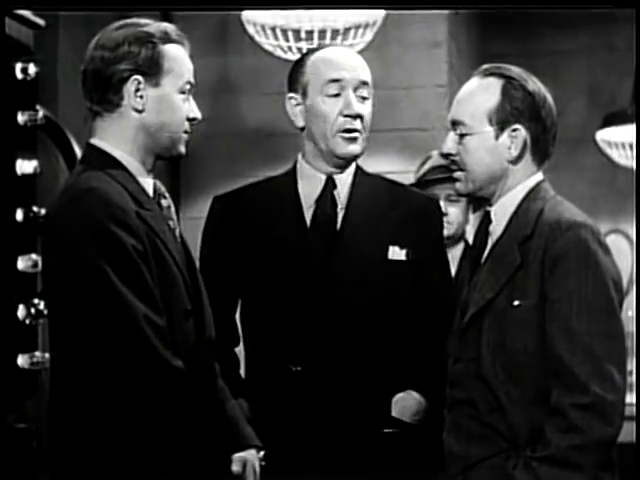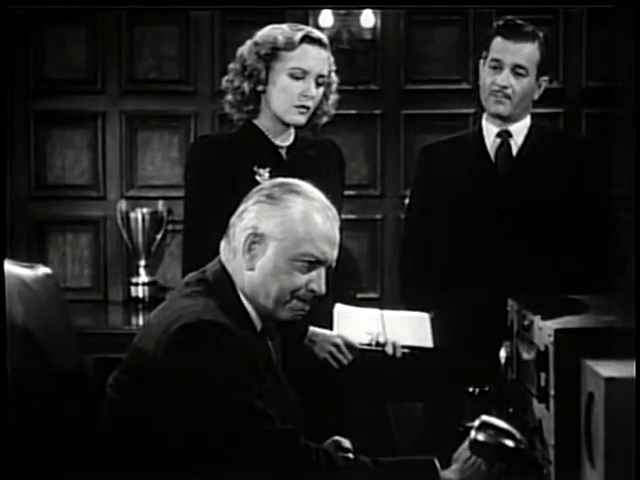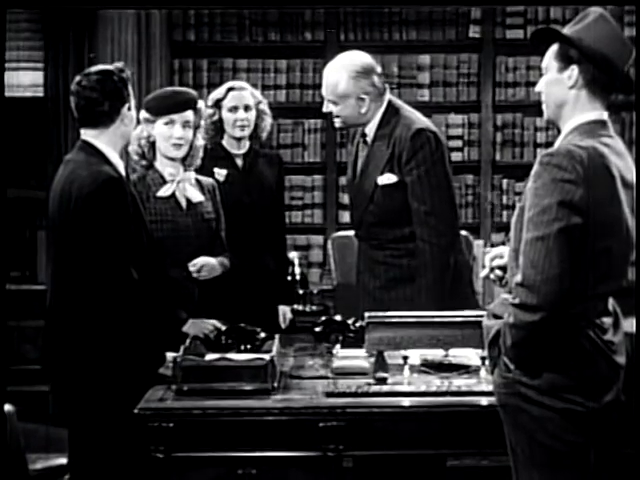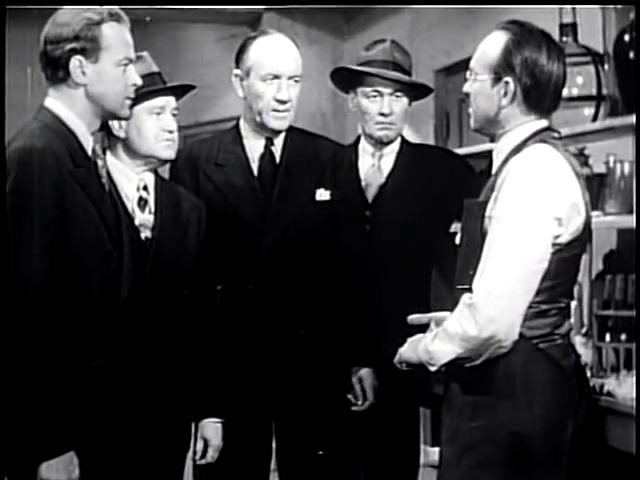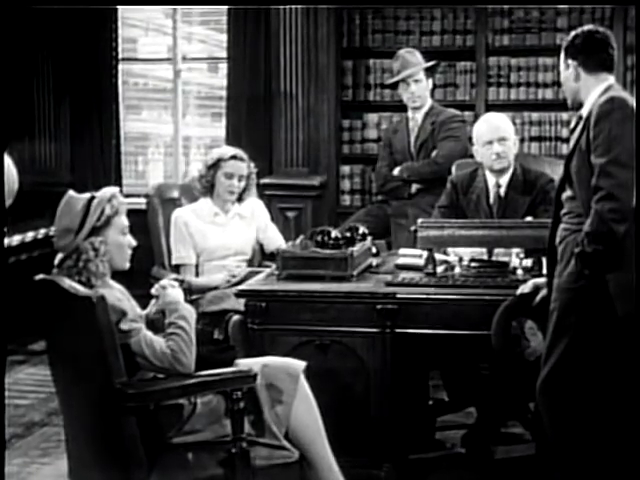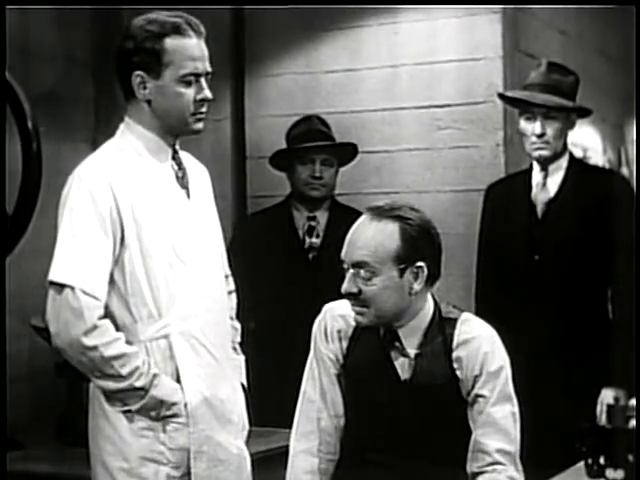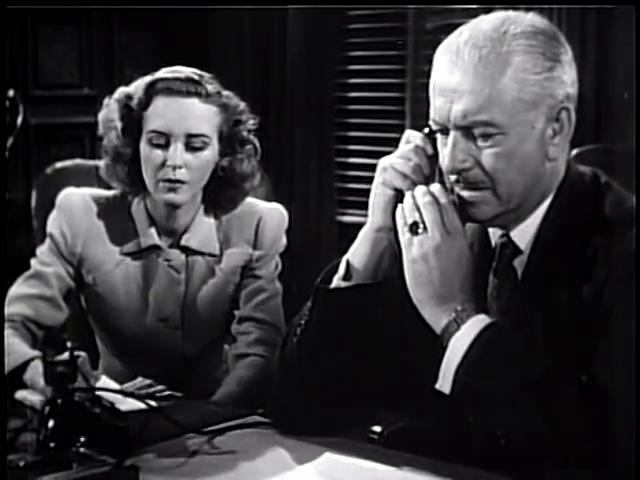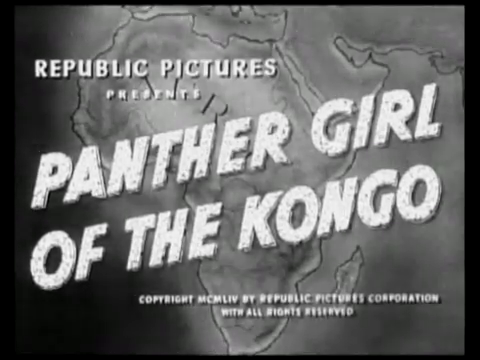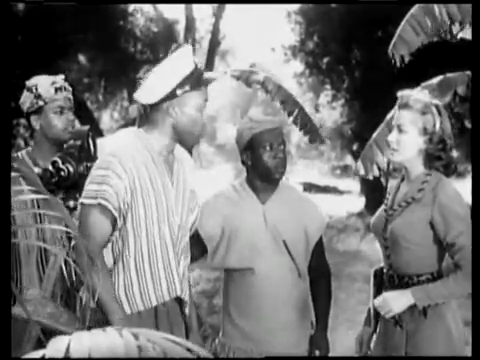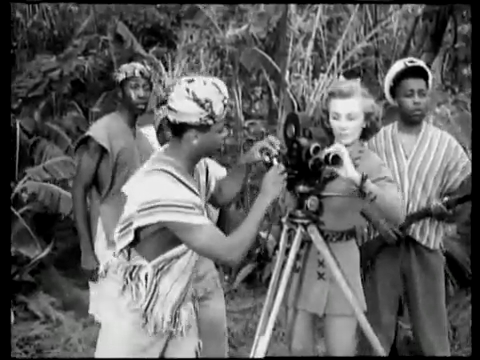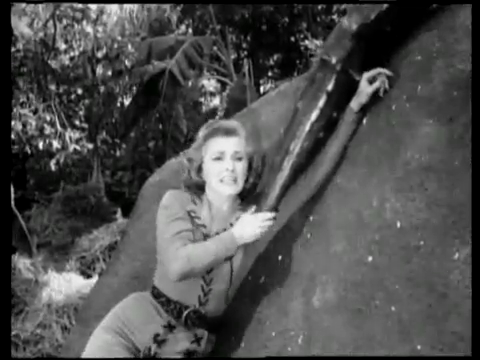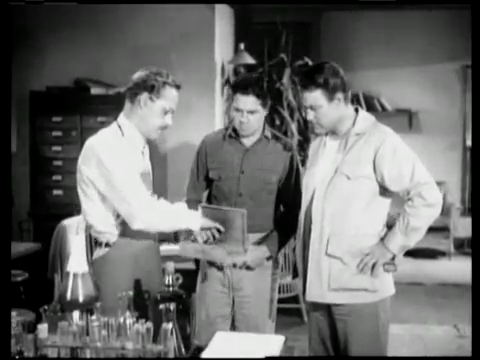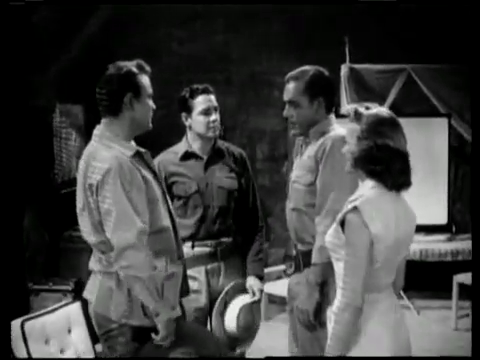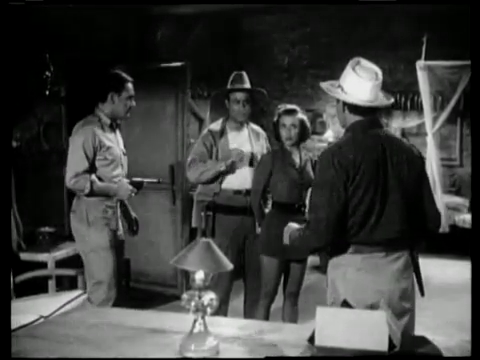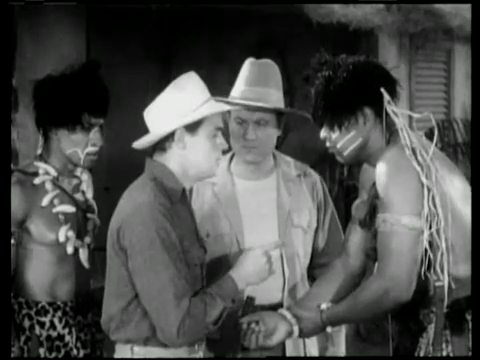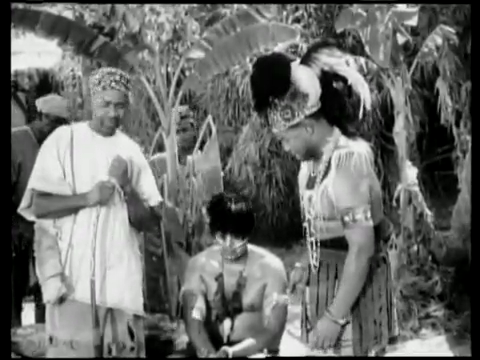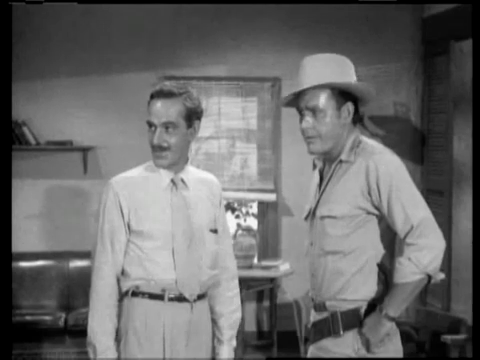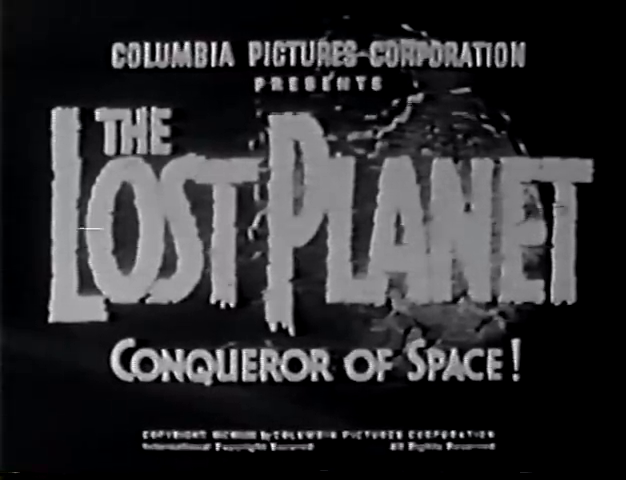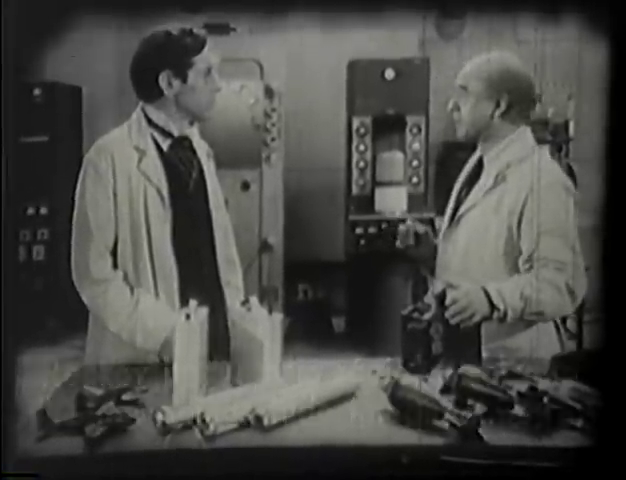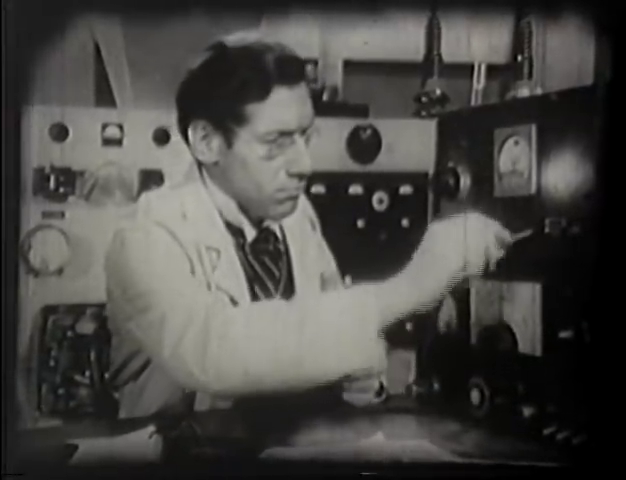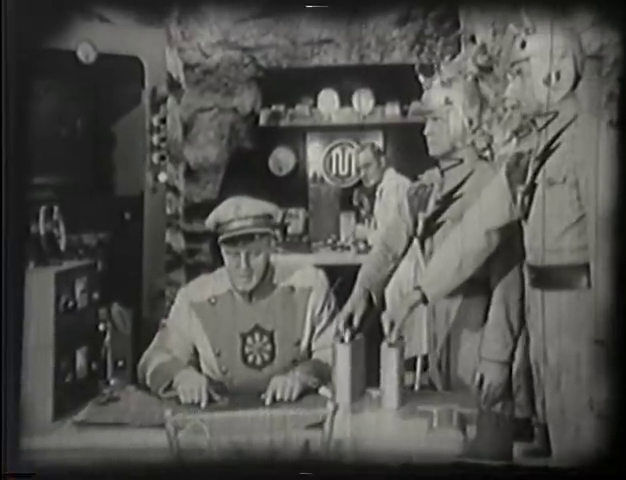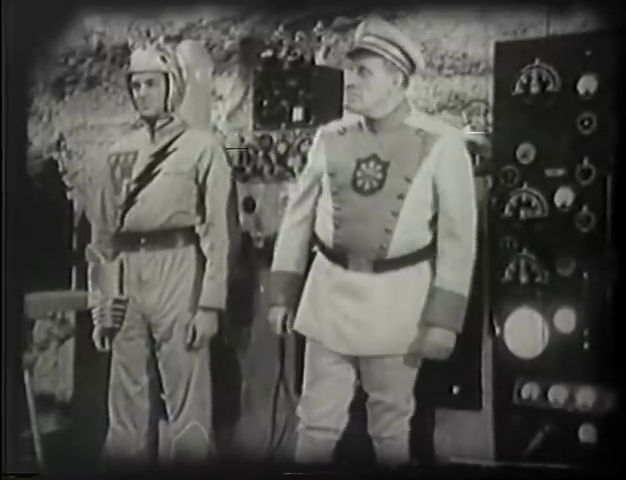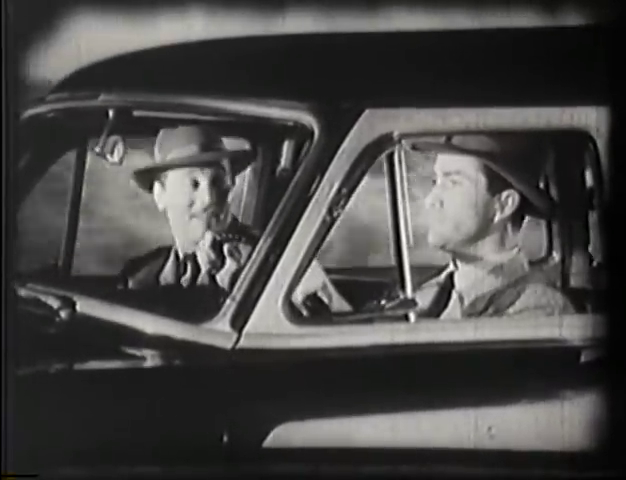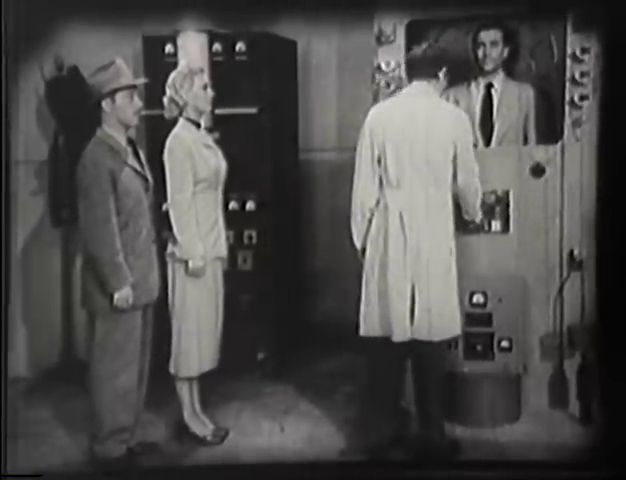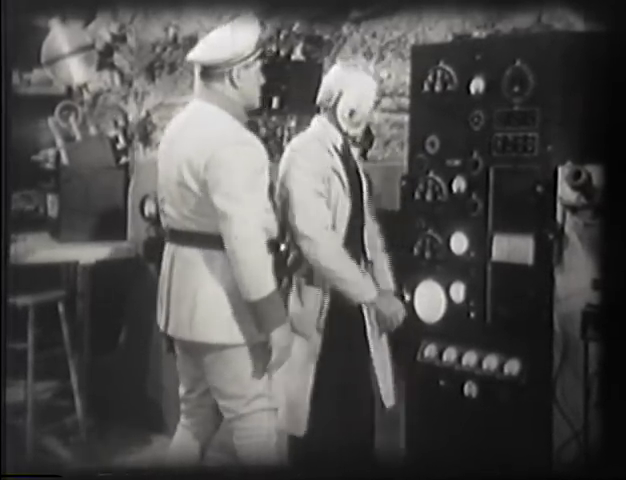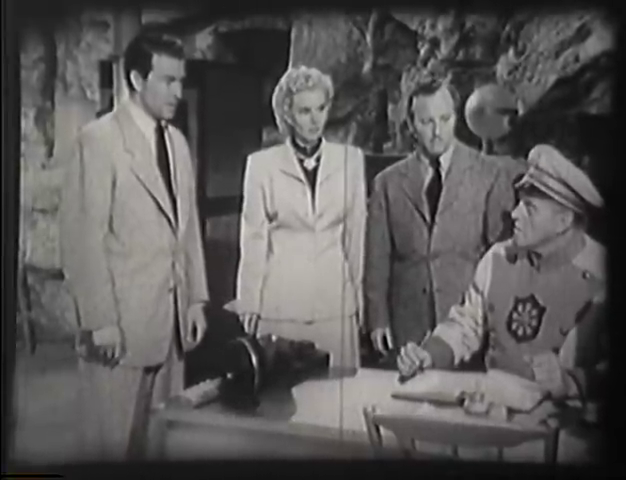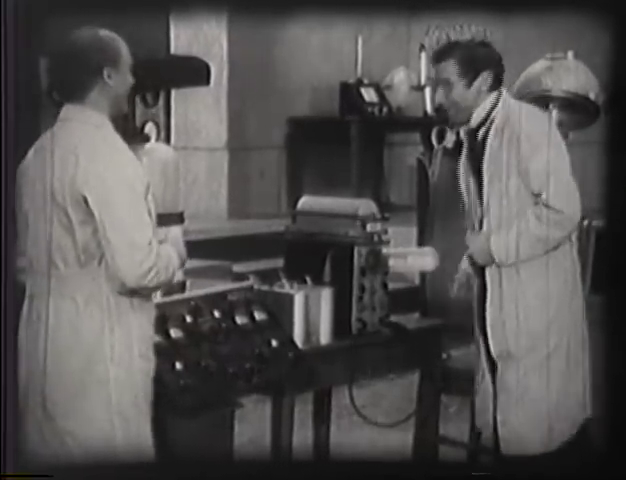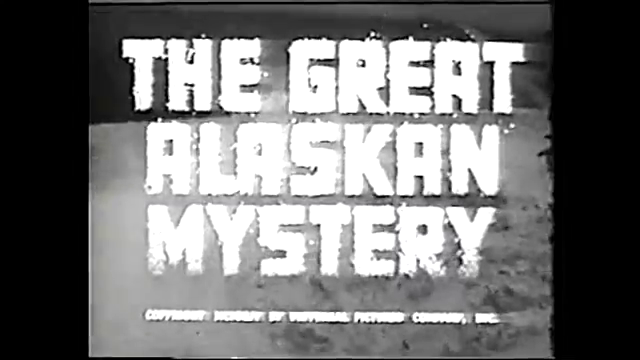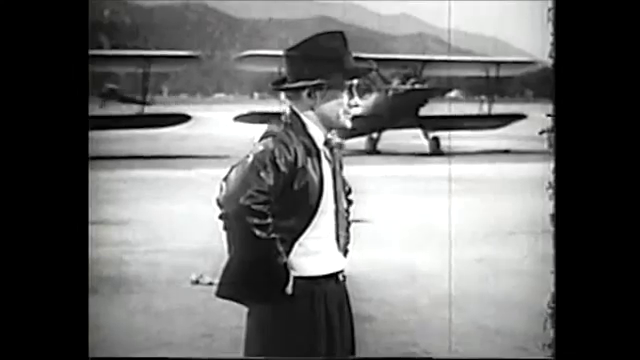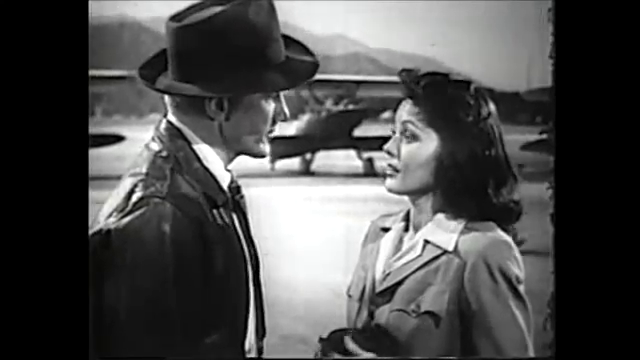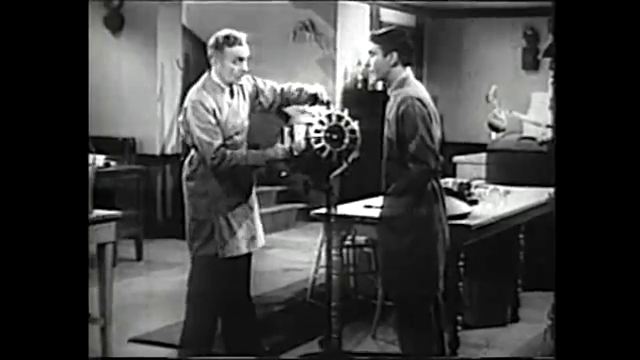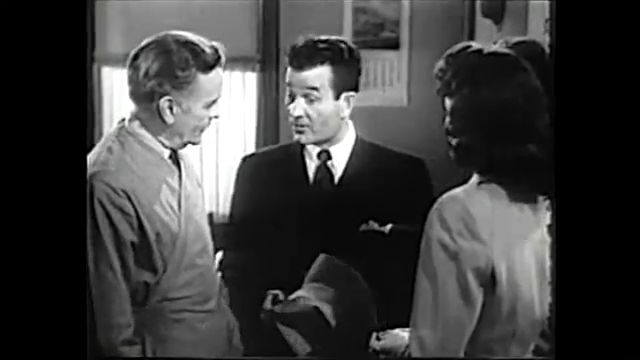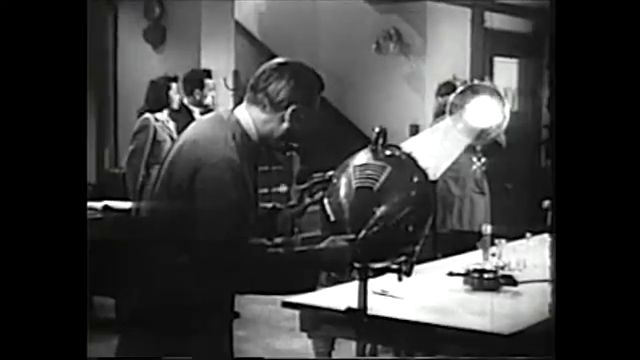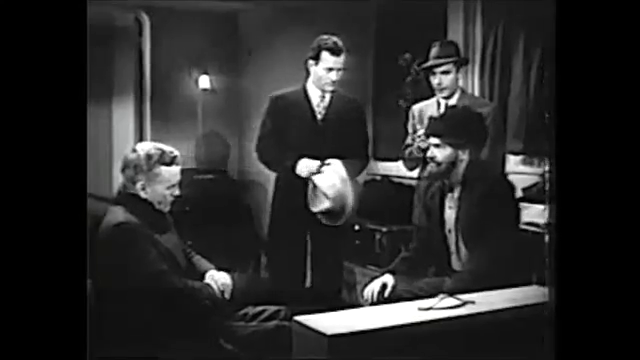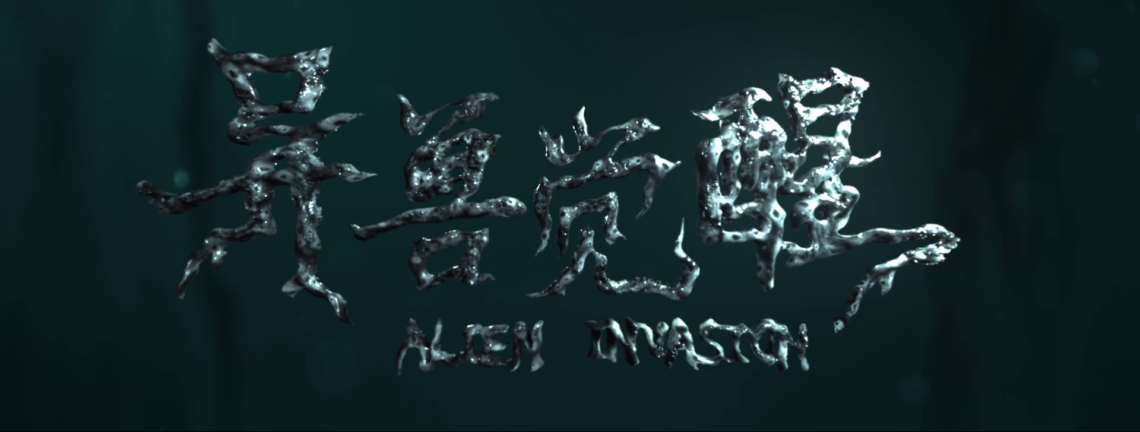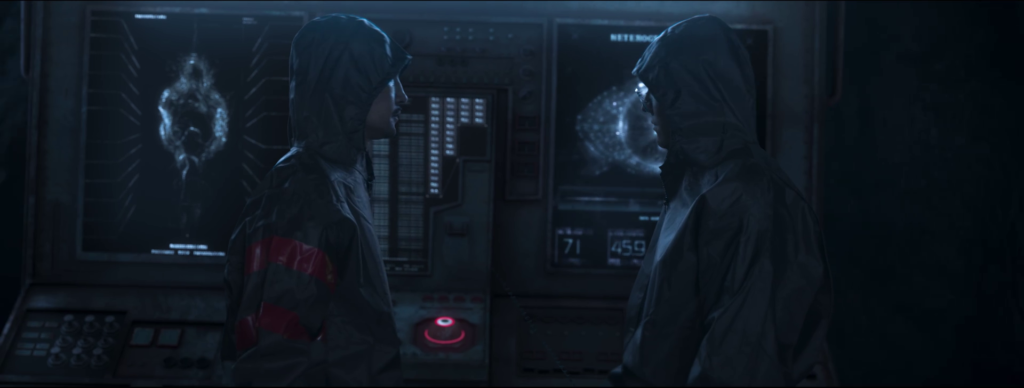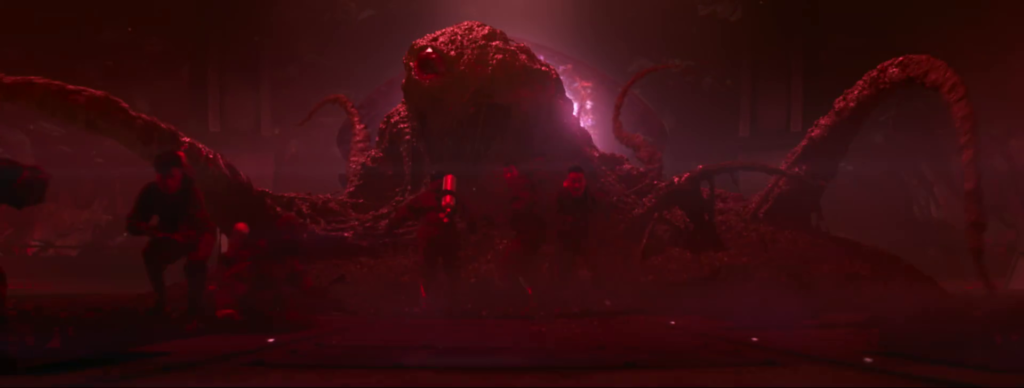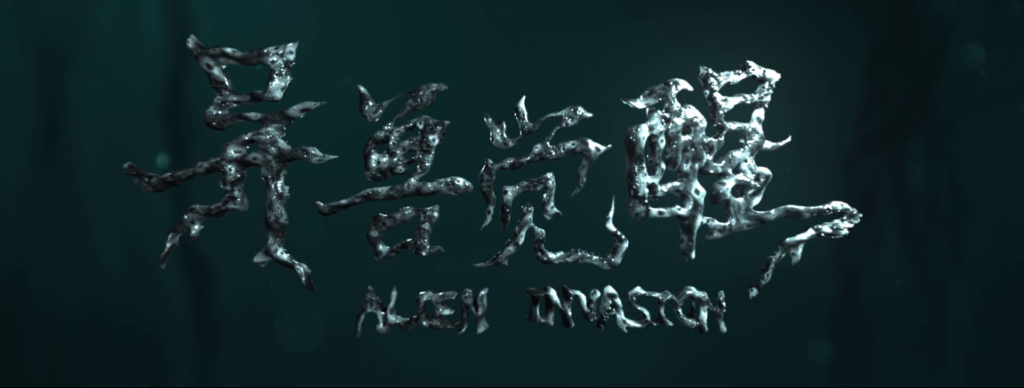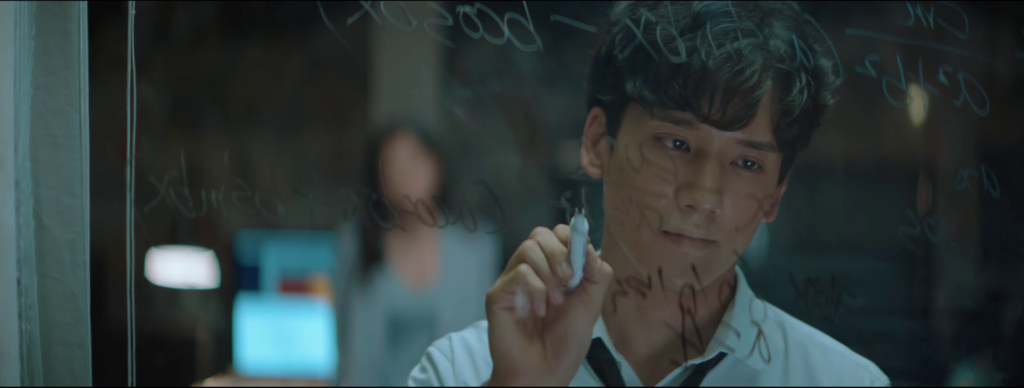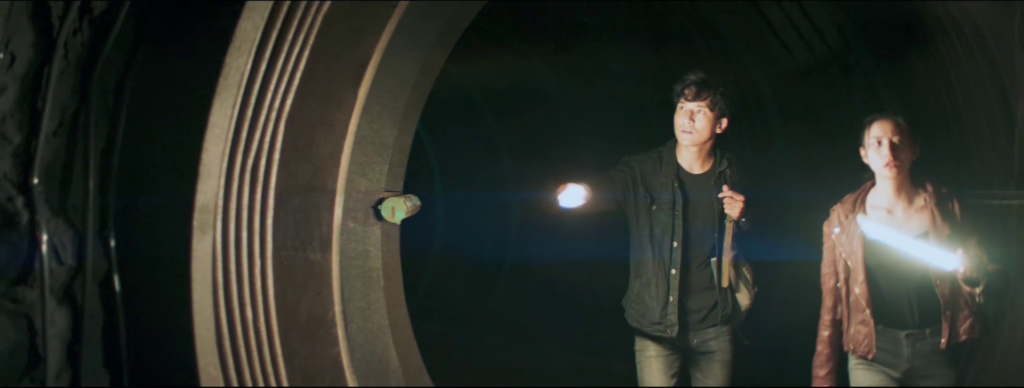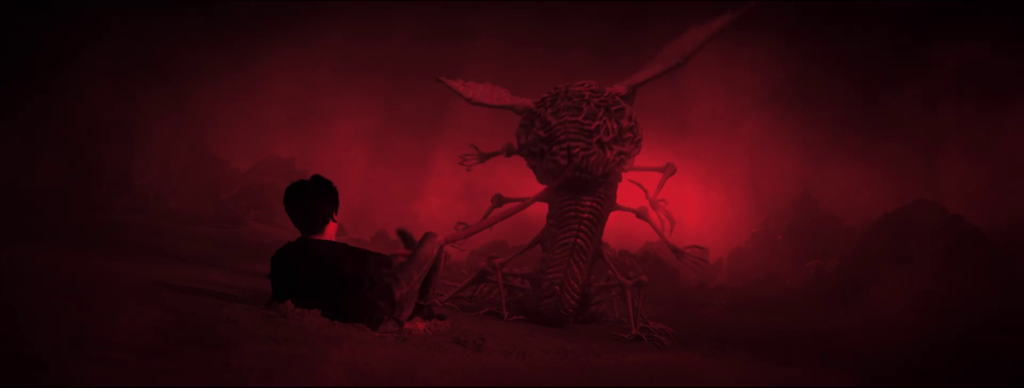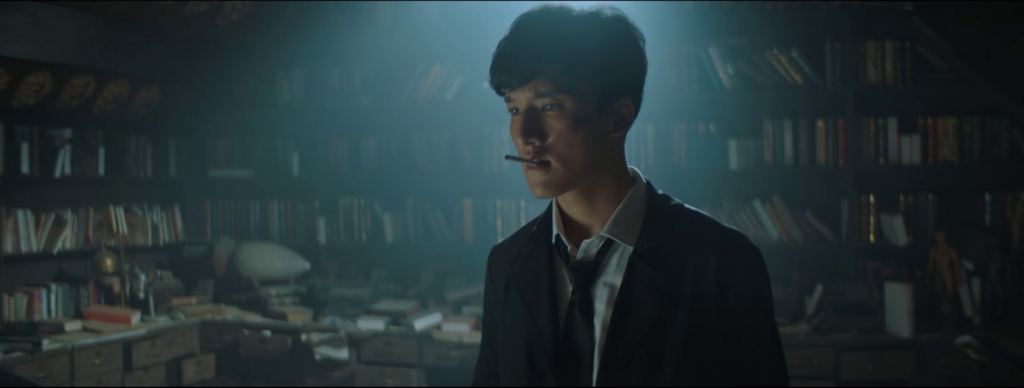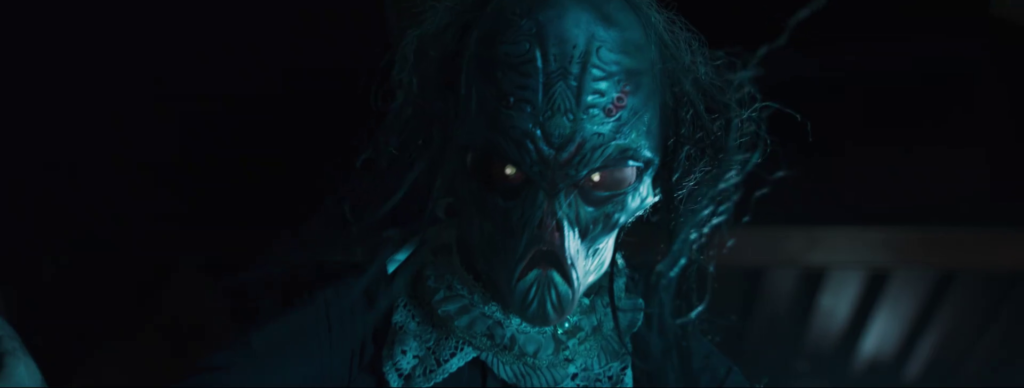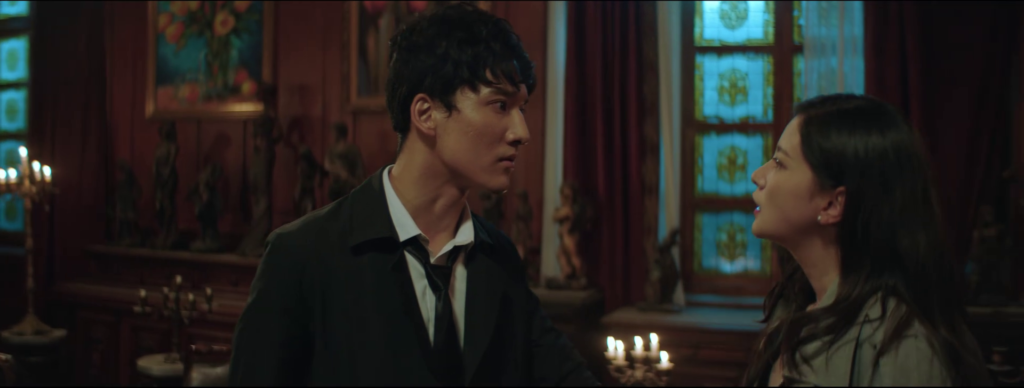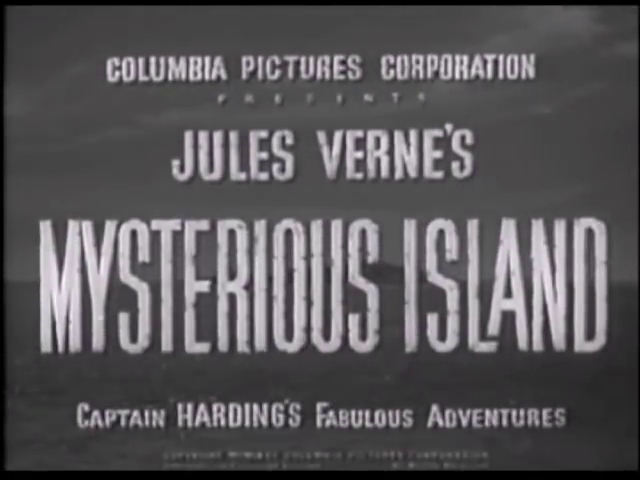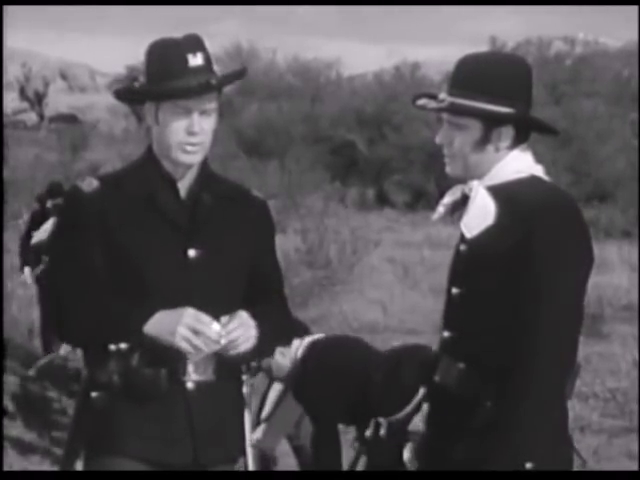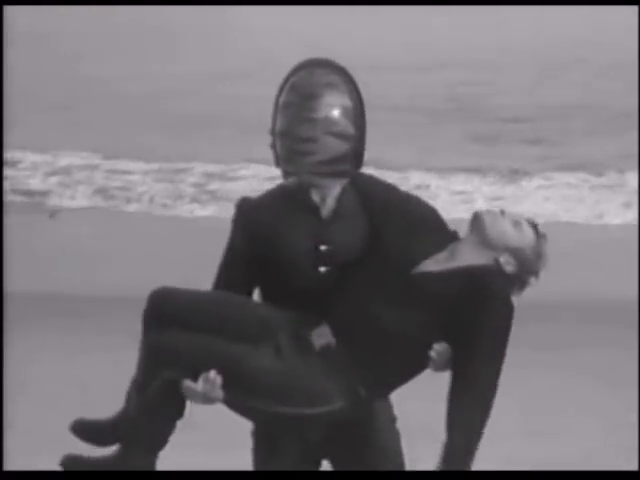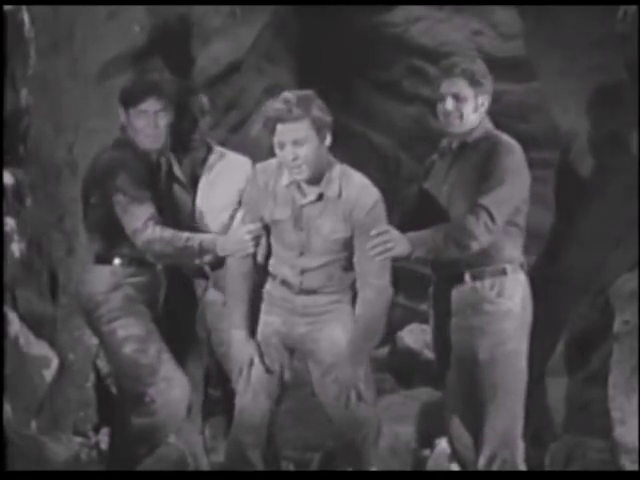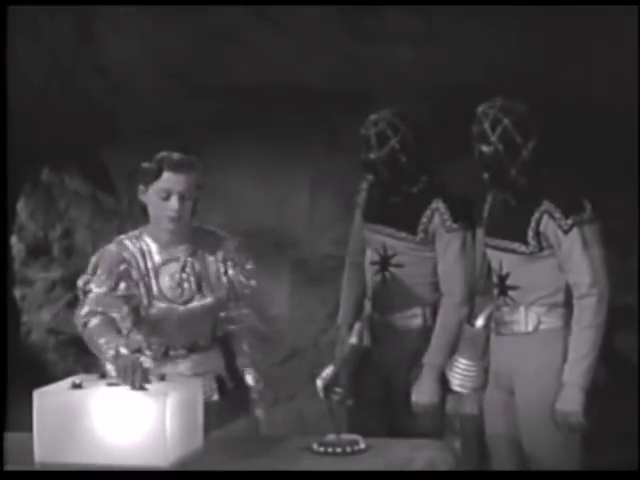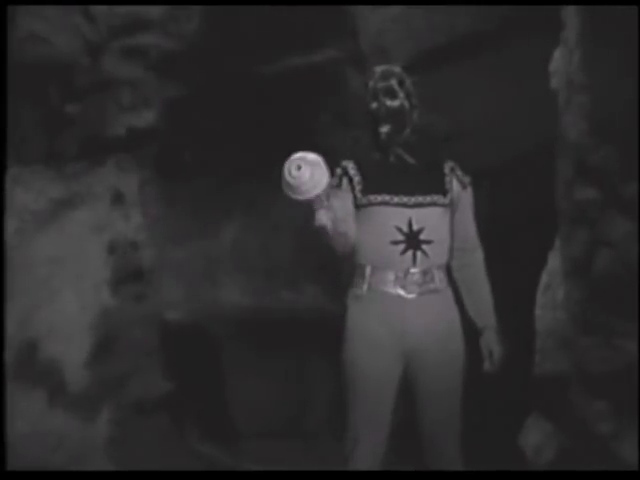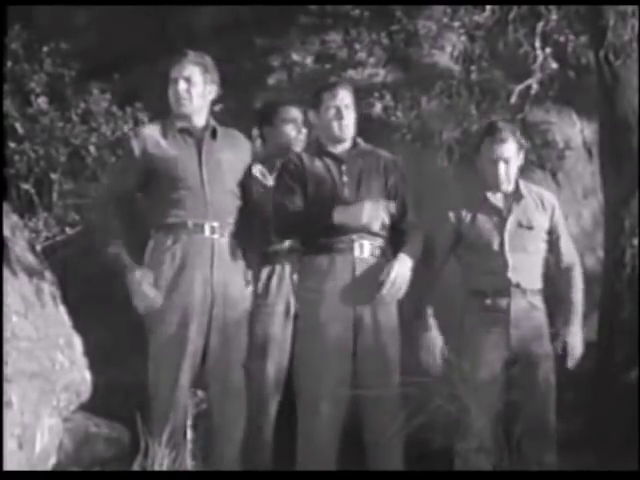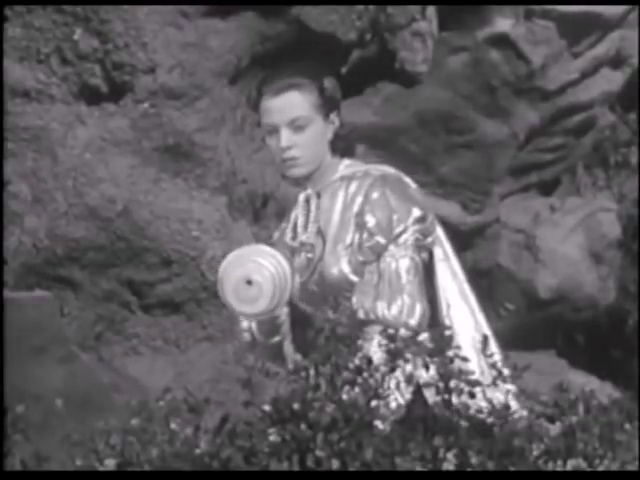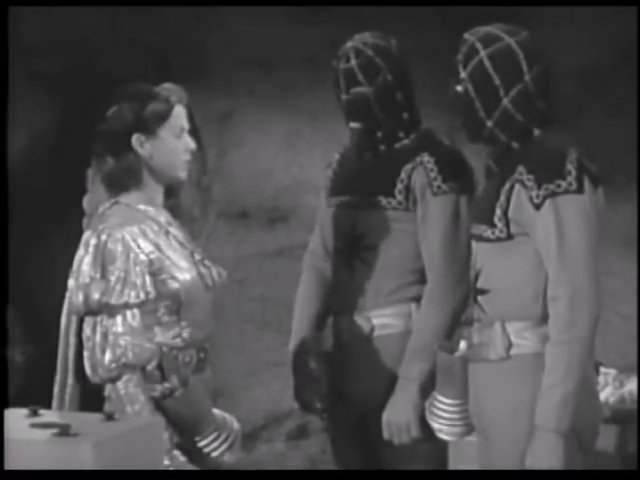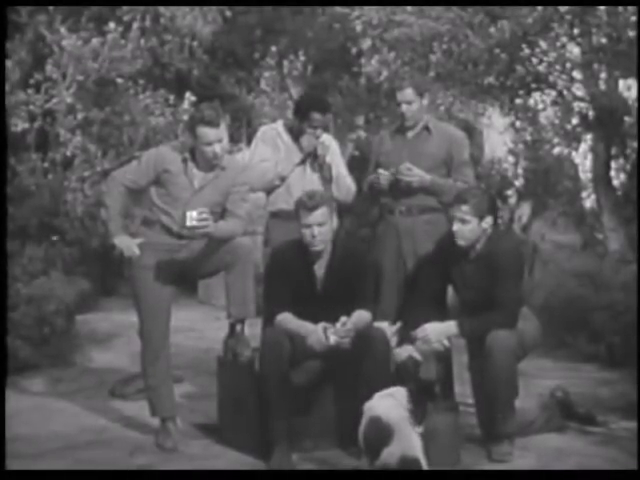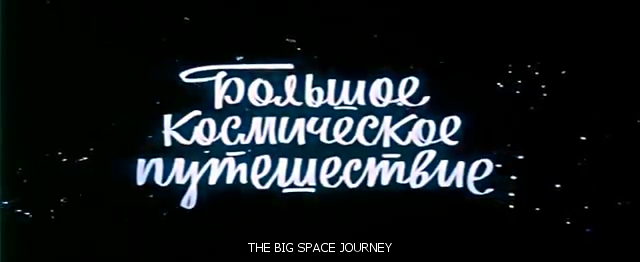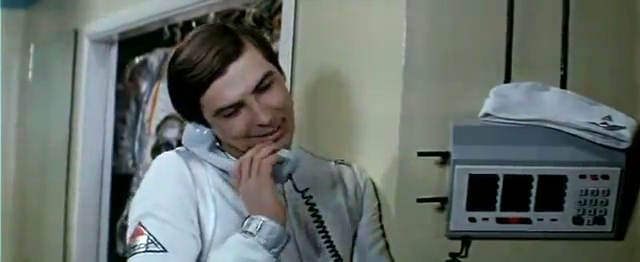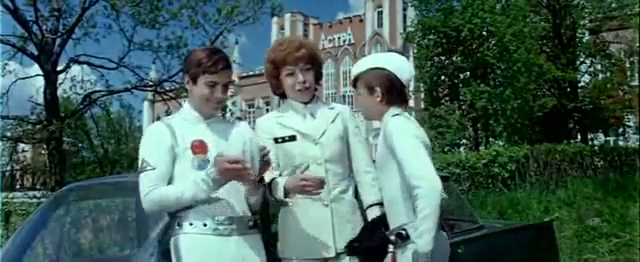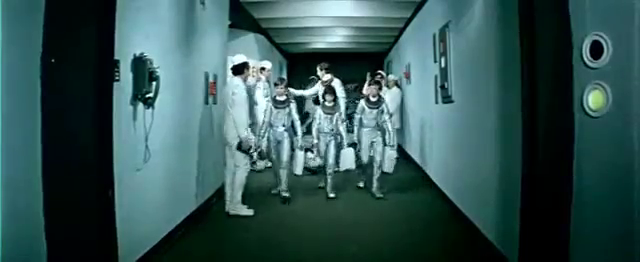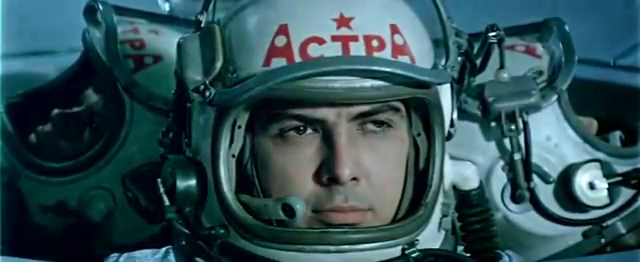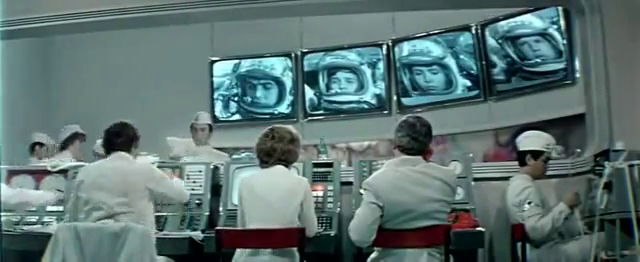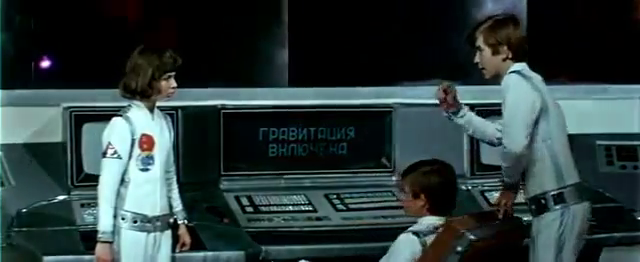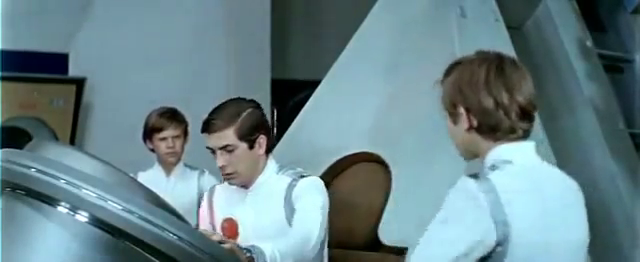-
#475 – Trancers III (1992)
Trancers III (1992)
Film review #475
Director: C. Courtney Joyner
SYNOPSIS: Jack Deth is trying to make a life for himself after being stranded in Los Angeles. However, he is timejacked to Los Angeles 2247, where it turns out a new wave of trancers have been devastating the future. Jack is assigned to go back to 2002, when the trancers were first developed, to wipe them out at the source…
THOUGHTS/ANALYSIS: Trancers III is a 1992 sci-fi film, and the third film in the Trancers series of films. In the beginning, we catch up with Jack Deth not doing too well for himself after the end of the last film, as he now works as a private detective that finds people cheating on their partners, while his own marriage is heading to a divorce. While out at work, he is kidnapped by a trancer and taken to the year 2247, where he finds out that a new wave of trancers has been created and is waging war against the ruling council that he formerly worked for. He is assigned the task of travelling to 2005, when these trancers were first developed, and wipe them out at the source. The Trancers films centre around the use of a technology in the future that allows a person to be sent back “down the line” (through time) to inhabit the body of their ancestor. This gimmick was explored with some consideration in the previous films, but isn’t really a part of this film; which is a shame because it was the only really unique thing about the films. These films feel very much like a cheap terminator/Blade Runner venture, and again, Trancers III is no different. With a runtime of just over seventy minutes, there’s not really much time to get anything complex up and running, and the film settles for a bunch of action scenes and mindless violence that never really forms into an overarching story. There is the plot concerning Jack’s attempt to stop the formation of the trancers army, but it never seems to come to the forefront of the film, and everything feels a bit disconnected.
The characters are all pretty familiar, with a mix of the characters from the previous films, and other characters which are very familiar action movie tropes. Jack Deth is still the grizzled rouge-ish hero from the previous films, with his inexplicable ability to have women much younger than him fawning over him. He’s a mix of action movie tropes and doesn’t really offer anything unique in that respect, although Tim Thomerson does a good job of over-acting the role, which is pretty good fun. The villain is Col. Daddy Muthuh (slight play on words of “Daddy Mother” if you hadn’t noticed), who has created this new trancer army, and acts as their parental figure (hence the awful pun name). He’s a fairly over-the-top and clichéd villain, but with a name like “Daddy Muthuh” alongside “Jack Deth,” how seriously can you really expect to take this film? The rest of the characters are again pretty typical, and the constant conflict between the women in Jack’s life makes a silly distraction, and constantly raises the question why they are attracted to this man.
Despite being a low budget production typical of Full Moon Entertainment, there’s some decent effort clearly put into some of the elements of the film. The sci-fi props look good and sturdy, and some of the fight scenes are decently choreographed, and display a fairly entertaining amount of action. It does feel like a departure from the noir-esque style of the first two into a more cut-and-paste action movie, and the film loses much of it’s uniqueness in that transition. There’s a few gory moments too that you would not have seen in the previous films. Trancers III has some decent qualities to it, in particular some of the aspects of its production and some of the acting, but there’s very little substance beyond what viewers will have seen previously. Obviously with characters named Jack Deth and Daddy Muthuh you should not be expecting a super serious story or experience, but the odd pacing, short runtime and the lack of a solid set-up amidst the confusing multiple times makes a lot of the film fall flat. It has some redeeming features to make it watchable, just don’t expect to be fully entertained or get anything out of it.
-
#474 – A Visitor to the Museum (1989)
A Visitor to the Museum (1989)
Film review #474
Director: Konstantin Lopushanky
SYNOPSIS: In a seemingly post-apocalyptic world, a man visits the shoreline from the city to visit a museum that is only accessible one week every year when the tide is low enough. He is following the rumour that somewhere inside is a portal to another world, where one can escape the hell that is the one he lives in has become…
THOUGHTS/ANALYSIS: A Visitor to the Museum is a 1989 soviet post-apocalypse film directed by Konstantin Lopushanky. The film is set sometime after an unspecified ecological disaster has ravaged the planet: many people have become mutants and are locked up in reservations to be used as slave labour and such, while what remains of the unmutated live in cities. We aren’t given too much detail on the state of the world or what happened to it, but the backstory isn’t really important: like a lot of post-apocalypse films, how the world ended doesn’t mean much when you’re just trying to survive day-to-day in a new harsh world. A man visits the coast from the city hoping to visit a museum of relics from the old world buried beneath the sea. The path to the museum is accessible only once a year when the tides are low enough, and the man is following a rumour that within the museum is a portal to another world to escape the horrors of the one he currently lives in. The story of the film is very abstract and never hinges on definitives: a lot of the plot is casually explained as the man has tea with the family he is staying with, and they talk about the state of the world as very much matter-of-fact, in contrast to the true hell that the mutant “degenerates” are constantly experiencing.
Konstantin Lopushanky, the director of this film, worked on Andrei Tarkovsky’s Stalker film, and it definitely shows: the themes of isolation and desolation in a post-apocalyptic world and trying to find a way out are shared between the two, and there are very similar camera techniques and effects used to convey this. Lopushansky, however, always feels like Tarkovsky’s apprentice, and never really surpasses the master that is Tarkovsky, or offer anything different. The weak links in the film are definitely how the story reveals itself, and offers very little direction or clue to what is going on. Obviously, the film is meant to be ambiguous and centres around a loss of meaning in the post-apocalypse, but the film feels a bit too ambiguous in centring the main character and certain aspects of the film so you never know where they are or what’s going on. The plot points that do offer something include the contrast between the unmutated, who are unbothered atheists, and the God-fearing “degenerates” who scream out bible verses and quotes, even though none of them know what any of it means because the meaning of the bible has been lost.
The production of the film feels very considered, and again obviously taking inspiration from Tarkovsky. The outdoor location shots looks great, particularly the mountains of garbage and rubble that our protagonist traverses, which is apparently what most of the world looks like now. The landscape shots that emphasise the isolation of the protagonist abandoned amidst nature also works well. There’s also the large crowds of mutants in certain scenes give off an eerie feeling, as they move and act in seemingly genuine terror. Lopushansky uses the colour red to completely light many of the scenes, and it provides a good bit of consistency throughout.
This is definitely not a feel-good film: it is the end of the world, and we’re meant to feel it, the only hope of escape is this absurd rumour the protagonist is chasing about a portal to another world, which as the only option, shows just how bad things are, but again the unmutated just sitting around and discussing over tea as just a simple matter-of-fact furthers that strange contradiction. Overall, Visitor to a Museum definitely tries to capture some of that Tarkovsky magic of slow, epic films, but it never really hits the mark completely, nor does it offer anything new or original to the Tarkovsky formula. It’s not a bad film, and it received some decent recognition and awards, but again falls short of the master due to leaving things too ambiguous and without direction.
-
#473 – Ghost Patrol (1936)
Ghost Patrol (1936)
Director: Sam Newfield
Film review #473
SYNOPSIS: Professor Brent has invented a machine that can stop internal combustion engines from a distance. The leader of a group of bandits kidnaps him and forces him to use his invention to bring down aircraft so they can rob them. Federal agent Tim Caverly is sent in to investigate and rescue the professor, and when the local bandits mistake him for outlaw Tim Toomley, he assumes his identity in order to get closer to the bandits and uncover their plan before they bring down the next plane…
THOUGHTS/ANALYSIS: Ghost Patrol is a 1936 film. The story centres around a device that is able to bring down planes from a distance by stalling their engines, and a gang of bandits that has kidnapped the inventor and forcing him to use the machine to bring planes down, so that they can loot the wreckage. Government agent Tim Caverly is sent in to investigate and rescue professor Brent, who invented the device. Encountering the bandits who are responsible, they mistake him for Tim Toomley; a noted outlaw, and Tim plays along in order to get closer to the bandits and find out where the professor is. The film is basically a western with the added sci-fi element of this machine that can stop internal combustion engines. It’s called a “radium tube,” and a lot of the inventions in these films are named after radium, or fuelled by it for some reason. Anyway, at just under an hour long, there’s not too much in the way of content to talk about: the pacing is slow, and there’s just a lot of horseriding and dialogue that moves along the story at a slow pace. Everything is quite predictable and unsurprising, and a swift resolution at the end doesn’t provide much of an exciting climax. The plot reminds me very much of a film serial, which would probably have found a way to stretch the story into three years of a back-and-forth between the characters, while adding nothing of value otherwise.
The characters themselves are pretty forgettable and bland too. Tim Caverly/Toomley is a standard gun-slinging cowboy with no real personality. His sidekick serves as a bit of comic relief, and the sole female character delivers a good performance, but ultimately serves very little purpose other than being the daughter of the professor (the only purpose a vast majority of female characters have in films at this time). The villains are, as well, a rather forgettable bunch.
There’s not much that is remarkable in terms of the film’s production: most of it looks like repurposed sets and props from any western from the era. The machine looks quite cool and complex, but we don’t really see much of it: in fact, the professor and the machine don’t show up until after halfway through the film. The lack of any accompanying music also makes the film feel empty, and there’s a mismatch in the audio, which means you can hear when the film is on a set from the echo in the audio to when it is outside on location. Also, I’m not sure what the title “Ghost patrol” is referring to, as there’s nothing remotely ghost-like or much patrolling done at all. Overall, Ghost Patrol is a fairly forgettable film with unremarkable characters, a story you’ve seen before, and a setting in an oversaturated western genre that even with a sci-fi twist fails to stand out.
-
#469 – The Master Key (1945)
The Master Key (1945)
Film review #469
Directors: Lewis D. Collins, Ray Taylor
SYNOPSIS: A secret Nazi organisation operating in the United States has kidnapped Professor Henderson in order to force him to finish his “auratron” invention that can make gold out of seawater, and use the gold to fund the Nazis operations. Tom Brant, an FBI agent, hunts down the Nazi spy ring with the help of Detective Jack Ryan and his contacts in the police force to find Professor Henderson and bring the Nazis to justice.
THOUGHTS/ANALYSIS: The Master Key is a 1945 serial released by Republic Pictures and comprised of thirteen chapters. The serial centres around a Nazi spy ring operating in the United States, who kidnap Professor Henderson and force him to complete his “auratron” invention, which can turn seawater into gold, which the Nazis will then use to disrupt America’s industrial might. The only thing standing in the way of their evil plans is FBI agent Tom Brant and his companions in the police department. The plot centres around this Nazi spy ring who identify themselves with a key that has the letter “M” and a number engraved on it. They are given their orders by the “Master Key,” who conceals their identity from even the group. That’s all the “Master Key” of the title refers to, and yes, it’s a rather uninteresting premise, given the keys serve no purpose other than to identify the spies, and are used at the start of each chapter to “summon” the master key who explains the plot. The main focus of the plot is Henderson’s invention which apparently turns seawater into gold, an idea which is sounds ridiculous even by the serial format’s standards. The chapters involve the typical plot structure of the heroes trying to rescue the professor and his invention…the amount of serials that enact this same plot is too many to count, and most of them do it better than this one. The plot has very little direction otherwise, and the back-and-forth between the protagonists and antagonists is painfully slow, and explained through long scenes of exposition that slow the pacing down to a crawl. There’s some cliffhangers that incorporate more impressive large crashes or explosions, but they are usually, and obviously, stock footage or models, and the fallout is never really shown, only explained further with the shot of a newspaper front page and even more dialogue.
The characters are the usual bunch you associate with the serial format: there’s the young male leads who get into the fights, the older men who serve as support, and some token women who get the role of journalist or secretary. The villains likewise are uninteresting and have no character or role other than being henchman. The main villain we never see until the very end, instead giving orders through some sort of radio…thing. There’s constantly very little for the viewer to grasp a hold of, and as such, it is difficult to maintain attention on the serial as a whole. There’s some supporting characters including a bunch of younger street-wise teenagers who help out under the watch of Aggie, a similarly street-wise woman. Again, none of the characters really stand out or do anything of merit.
Released in April 1945, The Master Key was released in the very dying days of World War II. As such, it is difficult to see how relevant the whole Nazi spy ring plot was. The wartime serials typically focused on Japan as the primary U.S. enemy, and choosing the Nazis as the villains is perhaps an odd choice at this time. Each chapter opens up with a disclaimer of sorts saying that the serial is fiction that “could never happen,” and states that it takes place in 1938 before the war even started. I assume this was in order to keep the serial in line with the requires of the regulatory bodies, perhaps setting it before the war was necessary to not give the illusion that the Nazis were still a threat to the US in the then dying-days of the war, and that the U.S. was too powerful for something like this to happen anyway. It’s interesting then that they allowed it during wartime: perhaps they needed people to be on their guard, but on the verge of the Nazis being defeated, the tone changed to saying that there was no way that anything like this could ever happen to America. It’s also interesting that the serial clearly identifies the enemies as Nazis and shows their flags in their hideout: again, most serials previously did not mention the Nazis by name or show any of their insignia, instead showing enemies that were working for a “foreign power” which obviously was meant to be the Nazis. Again I assume the requirements of the film regulators changed at the end of the war, and by being able to identify them and place them in the past, it signified that they were a product of history, and no longer a real threat. Also a small note concerning the invention that can apparently turn seawater into gold: it’s so outlandish and nonsensical even by serial standards that it’s very hard to take seriously.
Overall, The Master Key is a poor showing, released at the wrong time. It has very little direction in terms of story or characters, and the long-winded scenes of dialogue and exposition overshadow any action scenes. It exists at a strange point in history where the Nazis were no longer credible or interesting villains, but also before the post-war serials, which turned either to America’s military war heroes battling foreign spies (implied to be the soviet union) or more sci-fi adventures. As such, The Master Key falls between the cracks and fails to find very little relevancy or entertainment value.
-
#467 – Panther Girl of the Kongo (1955)
Panther Girl of the Kongo (1955)
Film review #467
Director: Franklin Adreon
SYNOPSIS: Jean Evans, a member of a wildlife foundation, is in Africa taking photos of local wildlife when she encounters a giant crayfish that nearly kills her. She teams up with Larry Sanders, a big game hunter, to stop the creature and discover it’s origins.
THOUGHTS/ANALYSIS: Panther Girl of the Kongo is a 1955 serial produced by Republic Pictures and comprised of twelve chapters. The serial centres around Jean Evans, who works for a wildlife foundation taking photographs of wildlife. She is known as “Panther girl” because…I don’t know, she rides an elephant sometimes and dives off cliffs; the only panther I recall seeing is at the end screen. Anyway, she encounters a giant crayfish that attacks her, but is saved by Larry Sanders, a big game hunter in the area. The two team up to try to stop the monster and unravel the mystery of it’s origins, while trying to stop two outlaws in the area. This is the cornerstone of the plot, alongside Dr. Morgan, a scientist also in the area, has created the giant monster to scare off people from a mine full of diamonds while he harvests them all. Obviously, this type of plot has been done to death, and is perhaps more famously associated with a vast chunk of episodes of Scooby-Doo, meaning it’s hardly an interesting watch nowadays when it’s been done and done again. There’s also not much of a plot besides this, and the heroes trying to stop the giant crayfish monster thing. Trouble is, it doesn’t show up for a good chunk of the serial, and so Jean and Larry are left to do the typical back-and-forth with Morgan’s henchman, as they make plans, set traps, and start fistfights with each other. As it is, the plot rarely has any direction, and the stakes are also pretty low, since again it’s not all for world domination or anything, just a man wanting to mine some diamonds in the middle of nowhere.
Quite rarely for a serial, the main character is a woman. Jean Evans is the “panther girl” due to her prowess in the jungle (even though there’s no panthers that we see), and she actually does something other than being kidnapped. The only other serial that does this to this degree is perhaps Jungle Girl (more on that later). However, when the script requires it, she does revert to the typical screaming damsel in distress, and the male lead swoops in to save her. He also does most of the shooting and punching, but still Jean’s character is central to the plot. Larry is just a typical male lead with no real character. The villains also are just typical henchman and a “mad” scientist who isn’t all that mad, just wants to get rich. The setting of non descript “Africa” and its stereotypical depiction of “tribes” is problematic and presenting the entire continent in this way is a depiction that prevailed for decades thanks to films such as these.
The serial is quite similar to the Jungle Girl serial released in 1941, particularly with regards to a jungle-savvy female lead. This is also not coincidental, as this serial uses a lot of the footage from the serial, particularly the on-location stuff and animals. In 1955, the serial format was really on it’s last legs, and it’s no surprise that the studios wanted to do as little new stuff as possible (although cost-cutting and re-using footage has been a staple of the serial format for years at this point). Since Jungle Girl was released fourteen years before, and theatre-goers probably wouldn’t have seen it or forgotten about it due to the lack of home media releases, and the only way to see older serials would be to watch re-releases at theatres, which I believe were somewhat rare, and even then they really don’t benefit from repeated viewings. The re-used footage is pretty heavy in the finale, when the action sequences are almost entirely made up from this footage, and the transition between the different footage is very awkward and disjointed. For example, you can clearly see “Jean’s” outfit change from scenes as she instantly switches from a miniskirt to swinging from the trees in leggings. The “giant” crayfish is obviously not a giant one, just a regular one filmed amongst miniatures. It’s not particularly convincing, especially when the “giant claw” attacks people with the rest of its body just offscreen. Overall, Panther Girl of the Kongo is a fairly weak serial, in which it’s most interesting aspects are just bits of re-used footage. The plot is non-directional and has fairly low stakes, alongside often feeling it’s just padding for the more interesting re-used footage. The emphasis on the female lead is a more unique aspect, but she is reverted to the typical “damsel in distress” when the plot wants to do a more typical set-up of the female being the victim. The serial is very low on imagination and spectacle, and is emblematic of the serial format in it’s twilight years as the format became unviable with the introduction of televisions in homes.
-
#466 – The Lost Planet (1953)
The Lost Planet (1953)
Film review #466
Director: Spencer Gordon Bennet
SYNOPSIS: Investigating a suspected U.F.O. crash in the mountains, reporter Rex Barrow and photographer Tim Johnson head there to check it out, but find themselves captured and sent to the planet Ergro by scientist Dr. Grood, who sends them to work on the planet to mine minerals and build his inventions to take over the universe. Rex, Tim, captured scientist Professor Dorn and his daughter Ella must overcome Grood’s mind control device and other contraptions as they try to put a stop to his evil plans…
THOUGHTS/ANALYSIS: The Lost Planet is a 1953 serial produced by Columbia Pictures and comprised of fifteen chapters. It is the last science-fiction serial that the studio produced (although the studio itself only produced three serials which could be fully described as “science-fiction”). The serial starts out with reports of a flying saucer crashing on Mount Vulcan, and reporter Rex Barrow and photographer Tim Johnson go to investigate, but end up getting captured along with Ella Dorn, and taken by rocket ship to the planet Ergro, where evil scientist Dr. Grood has taken over the planet to mine a new element that fuels his evil inventions. The plot of the serial revolves around trying to stop Grood and his various inventions, most notably his mind control device, which places prisoners in his power. It’s not only that though: this element that Grood is mining also fuels inventions such as a death ray, mind-reading device, invisibility and a whole host of other sci-fi tropes. Normally just one of these inventions would be enough for a serial to focus on, but here they’re all thrown into the mix. While this helps with keeping the serial varied across its fifteen chapters, it also has the effect of having little focus on any one of them. The one which stands out most is the use of the mind-control/hypnosis device. which is probably the least interesting of them all, and a lot of the plot just revolves around being hypnotised and de-hypnotising certain characters, creating a predictable back-and-forth.
One of the interesting aspects of this serial is that it seems to have been planned to be a sequel to the Captain Video serial. A lot of the same actors return, and the costumes and props are obviously re-used from it (for example, the outfits of the “video rangers” are used for the uniforms of the brainwashed people on Ergro). Whether the idea of making this a sequel was scrapped early on for some reason is anybody’s guess. The characters themselves are an unassuming bunch, and fit the typical parts that these serials provide. Unlike Captain Video though, this serial actually has a female character, although as usual, her only noteworthy aspect is being related to another more important male character. There’s a number of villains that have their own unique personalities and play off against one another, but it never really develops into something remarkable, and the web of villains just becomes confusing and muddled. Particularly as the serial switches between Earth and Ergro constantly.
In terms of production, there’s some decent sets in this serial. The rocket ship looks good, and the space travel sequences between Earth and Ergro look pretty good, considering in 1953 no one had ever been into space. The acting is not great, but there’s definitely worse performances I’ve seen in serials. It might have gotten away with it, but some of the dialogue is pretty dull and loaded with technical jargon that the actors seem to be convinced about saying. One other problem is that both Earth and Ergro look exactly the same; obviously because both are filmed in the California hills like every other serial, and as such this adds to the confusion surrounding the story, as both planets look so alike you don’t know where you are some of the time. Another curious decision about the making of the serial is that there’s none of the typical fistfights you get in nearly every serial: the only time someone throws a punch is when Rex is turned invisible, and so even then, you can’t see him actually throw the punch. This is incredibly strange, most notable because Spencer Gordon bennet, the director, practically invented the choreography for serial fistfights. Maybe they wanted to focus on the scientific inventions and their varied effects for the action, but even then, as mentioned, this is only the third sci-fi serial Columbia made, and it seems a bit out of their comfort zones.
Overall, The Lost Planet is a bit of a mess, and suffers from attempting to do too much. The inventions and sets are cool, but they’re all just props without a decent plot to coalesce around. The stakes are pretty detached as most of the action unfolds on this non-descript planet, and the characters fail to make an impact despite having such a large cast. The lack of action in this serial is very questionable, and the array of inventions don’t really fill in the gap. The whole serial is full of typical set-ups and schemes, but fails to give any motivation for the characters, or direction for a plot to develop.
-
#464 – The Great Alaskan Mystery (1944)
The Great Alaskan Mystery (1944)
Film review #464
Directors: Lewis D. Collins, Ray Taylor
SYNOPSIS: Dr. Miller, along with Dr. Hauss, has invented a new death ray called the paratron. However, Dr. Hauss is secretly a Nazi spy, who intends to steal the death ray to give to his home country. Jim Hudson, an adventurer of sorts, tells Miller that the material he needs to complete the paratron may be found in the Alaskan mines, and so they set off there, only to have their plane crash on the way…
THOUGHTS/ANALYSIS: The Great Alaskan Mystery is a 1944 serial released by Universal pictures comprised of thirteen chapters. The serial centres around the invention of a death ray called the “paratron,” invented by Dr. Hauss and Dr. Miller. However, they are having trouble completing it. Jim Anderson, an adventurer who knows Dr. Miller’s daughter Ruth, visits and remarks that a rare mineral that can be found in mines in Alaska might be what they are looking for. They all set out on a boat to Alaska, but various machinations are at work, as Dr. Hauss is secretly a Nazi spy, and intends to steal the paratron for his own country, getting the Captain of the ship to aid him in his scheme. The ship sinks and the cast are forced to survive in the Alaskan wilderness until they are rescued. The first two or three episodes are quite varied and dump the cast straight into the Alaskan wilderness doing what you would expect them to di in Alaska: getting caught in the snow, visiting Inuit natives, and such. After chapter three, the serial settles down into a more typical format, with the heroes and villains engaging in a back and forth as they try to get a hold of the paratron and stop each other. In terms of story then, it’s a standard serial affair. The stakes aren’t particularly high as everything revolves around this death ray which while is indeed powerful, doesn’t seem as revolutionary as some other inventions used in these serials (maybe because the idea of the death ray has been done to death). Also this is a wartime serial, and the stakes here probably pale in comparison to the real war going on at the time. There’s also perhaps something to be said for the fact that the setting of Alaska makes the serial feel somewhat removed from any wider context. However, the serial does make good use of the Alaska setting, as we get a decent amount of shots of the wilderness and unique set-ups in the mountains and snow, even if they rely heavily on stock footage.
The cast for this serial is fairly large. However, none of them really stand out, and fall into very typical serial roles. The cast does however, consist of a number of popular and well-known actors of the time, which enhances the serial with some decent performances. You have the typical protagonist, the sole female character, and the elderly scientist, along with the villains and their henchman. There’s also plenty of characters pretending to be helping the heroes when they are the villains. it all adds up to quite a mystery, but never really flows into a coherent experience as all the characters are easy to get mixed up and don’t form their own unique performance.
As mentioned, the depictions of Alaska are perhaps the most unique part of the serial, with plenty of scenic shots, lumberjacking, and wilderness sets that make it look the part. The dialogue is what mainly drives the story though, as with most Universal serials. There’s not a lot of action scenes outside of some classic shoot-outs and chase scenes, and again that is typical of a Universal serial, which usually are less action-oriented than the ones from rival serial producer Republic. Overall, The Great Alaskan Mystery has many of the serials tropes that it needs to, but fails to bring it’s busy story and large cast together to create anything special. It’s got everything it needs, but is ultimately a bit forgettable, leaving it to be remembered as just another average serial amongst the many of the format.
-
#463 – Alien Invasion (2020)
Alien Invasion (2020)
Film review #463
Director: Yun Xiang Lin
SYNOPSIS: Private detective Xu Siwei is hired by Yang Lin to investigate the disappearance of her Father. They are led to a secret underground facility where they encounter a strange portal to an alien world. Barely escaping the alien horrors within, Xu is haunted by strange dreams that relate to this alien species, and heads to the town where Yang Lin was raised to find answers…
THOUGHTS/ANALYSIS: Alien Invasion is a 2020 science fiction film. The film starts off in a secret laboratory where an experiment on an alien portal goes wrong and a creature escapes into the laboratory, forcing it to be sealed to prevent the alien’s escape into the world. Next, we are introduced to private detective Xu Siwei, who after capturing a thief returns to his home to find Yang Lin, a young woman who wants to hire him to find her Father, who went missing fifteen years ago. The two are led to a secret laboratory where they stumble upon the alien portal from the opening of the film. They manage to escape, but Xu starts having recurring nightmares about the aliens, and seeks to unravel the mystery further by visiting Yang Lin’s hometown, where strange things are happening. The plot of the film is inspired by the Cthulhu and other such eldritch horror, as the alien in the opening scenes shifts its amorphous form and impales people with its tentacles. The film is essentially a science-fiction thriller, attempting to build tension in the mystery it creates and the environments in which it is set. The film struggles to do this successfully because the whole tone of the film is very inconsistent: at the start there’s some more action and quirky light-heartedness, as Xu is clearly emulating Benedict Cumberbatch’s portrayal of Sherlock Holmes. The film leans more towards a horror theme as Xu and Yang investigate the laboratory, and more of a slow-paced thriller as Xu and Yang investigate what happened to her parents in the town she grew up. With these constant shifts in tone, the flow of the story is constantly interrupted and it it becomes difficult to maintain engagement in the story.
The film centres around the two main characters Xu Siwei and Yang Lin, who investigate Yang’s father’s whereabouts after he disappeared some fifteen years ago. As mentioned, Xu is clearly ‘inspired’ by Cumberbatch’s portrayal of Sherlock Holmes, but that part of his character doesn’t really factor in after the first act when the film shifts to a thriller and the mystery overshadows any character quirks. Yang has plenty of mystery about her, but there’s nothing too special about her character. The chemistry between the two is alright, but could probably have been pushed further to increase the stakes. Overall they’re pretty standard characters from the genre, but still fairly likable, and supplemented by decent acting on behalf of the actors.
The film is very much on par with other Chinese science-fiction released around the same time in terms of production, which means in terms of the CG is that it doesn’t look too bad, but it also typically looks like someone put it together in After Effects in an afternoon. The colour is one thing that I think stands out, as it is vivid without making the scenes lose their tense atmosphere. The practical effects look pretty daft, particularly the aliens which are obviously people in very silly looking masks that are quite distracting. The fact that we don’t see any of the aliens for a good majority of the movie again breaks the sense of flow, as we are treated to this set-up at the start, then nothing really comes of it for most of the movie. The whole mystery surrounding Yang’s mother and father also never gets a satisfactory payoff, as everything is delivered in cryptic riddles and not explained properly. Overall, Alien Invasion is a fairly standard Chinese science-fiction film of its type, and is unremarkable in terms of story, characters or production. It’s inspirations are obvious, and does little to develop or explore them in any unique way, making it a fairly forgettable experience.#movie#movie review
-
#462 – Mysterious Island (1951)
Mysterious Island (1951)
Film review #462
Director: Spencer Gordon Bennet
SYNOPSIS: A group of soldiers fighting in the American civil war are captured by Confederate forces. They eventually escape on an observation balloon, but find themselves drifting for days, eventually landing on a desert island far from civilisation. However, the island is far from deserted, as a native tribe, pirates, aliens, a castaway, and a mysterious masked man are all up to various schemes on the island, and the new arrivals must find a way to survive against all these different factions and find a way home…
THOUGHTS/ANALYSIS: Mysterious Island is a 1951 science-fiction serial comprised of fifteen chapters. It is based on the novel of the same name by Jules Verne. The serial is set in the year 1865, during the American civil war, where during the siege of Richmond, Virginia, Captain Cyrus Harding is captured by Confederate forces and taken prisoner. he engineers an escape with some other prisoners by hijacking an observation balloon. Unfortunately, a storm sweeps the balloon way off course, leaving it to drift for many days. When it lands, the crew find themselves on a desert island far from any civilisation, with no way home. They quickly find that the island is far from deserted however, and the new arrivals must contend with multiple factions and their schemes. As mentioned, the serial is based on Jules Verne’s novel of the same name, and incorporates a fair amount of the novel’s structure and characters. This is in contrast to a lot of serial adaptations of comics and books, in which usually only one or two main characters are made to fit into the serial format, omitting a lot of the original’s world and set-ups (such as things that would be too expensive to implement). As such, the serial has a good flow and pacing that keeps things interesting across the fifteen chapters. There’s still plenty of tried serial tropes when characters set up elaborate deaths with plenty of opportunity to escape rather than just killing them, but on the whole there’s plenty going on between all of the different factions to keep things varied and interesting. Even through the fifteen chapters, which is at the longer runtime of these serials, it keeps things consistently entertaining.
Let’s talk about the characters in this serial: there is a very large cast, and multiple different factions that are working against each other. Apart from the main cast that wind up on the island, there’s the native population, a castaway that has gone mad, pirates, aliens from the planet Mercury, and a mysterious masked man. In keeping with the novel, all of these characters are from the source material apart from the aliens from Mercury, which were added for the serial. The serial could have easily got away with not adding them, as there’s plenty of characters and plot anyway, but I suppose they were added to keep up with trends, as sci-fi serials and films started to get more popular after World War II had ended and the subsequent years in which war heroes were the protagonists of choice. The alien characters and plot fit in fairly well and are incorporated into the story so that they don’t stick out as a forced inclusion, which is good. While none of the characters are really unique or memorable, they have a consistency in their acting, and you know who they are and who they’re aligned with when they’re on screen. The heroes are perhaps the least interesting bunch, as they’re all typical young male leads without any special talent or occupation. Nevertheless, you will be on their side as they try and make their way home.
Mysterious Island is a nice surprise in the period of the serial format’s declining popularity. Obviously helped by being based off a famous novel helps give the story an interesting set of characters and set-ups, the serial also incorporates its own elements which, while nothing unique, is integrated nicely with the rest of the source material, even if the sound of pirates, American Civil War, and aliens together sounds like an absurd mix. The acting is decent, the sets convey a consistent sense of location, and the story has a good sense of direction that maintains interest and excitement. Spencer Gordon bennet, the director, was a serial veteran by this point, and delivers his usual developed choreography in fight scenes and keeping the pace of the serial steady yet energetic. Overall, Mysterious Island is a surprisingly decent addition to the serial format, at a time when good examples of it were few and far between.
-
#459 – A Great Space Journey (1974)
A Great Space Journey (1974)
Film review #459
Director: Valentin Selivanov
SYNOPSIS: The All-Union Children’s Space Competition aims to find three children that will be the first youths in space aboard a new spaceship. Sveta, Sasha and Fedya are chosen from the one hundred thousand applicants to embark on the mission with the sole adult on board, Captain Egor Kalinovsky. After the ship is launched, Egor is found to be sick, and placed in quarantine, leaving the children in charge of the spaceship…
THOUGHTS/ANALYSIS: A Great Space Journey is a 1974 children’s science-fiction film based on the play The First Three, or the Year 2001 by Sergey Mikhailov. The film opens up introducing a space program that will choose three children to be the first young people in space. Out of one hundred thousand applicants from across the Soviet Union, three children are selected: Sveta Ishenova, Sasha Ivanenko, and Fedya Druzhinin. The three are sent into space on the spaceship Astra with the only adult on the voyage, Captain Egor Kalinovsky, who is in charge of the mission. When Egor is found to have a fever, that may spread to everyone else, he is placed in quarantine, leaving the children having to take charge of the ship and the mission. The story is fairly simple, being a film aimed at children, and is fairly light on the details concerning what the mission they are on actually is. Nevertheless, there is plenty that is going on in the film, as the children have to navigate through a fair amount of emergencies and strange situations as their journey continues. Not having an overarching objective hinders any sense of direction and accomplishment the film has, but nevertheless, there’s a good sense of adventure and enough variety to capture viewer’s imaginations. There’s a bit of a twist in the story that explains most things at the end, but I’ll discuss that at the end too.
The three main characters are the children that were chosen through the space program. Each of their characters are developed through flashbacks to when they were undergoing the testing, highlighting their relationships with their parents and each other. There’s also Egor, the only adult on the spaceship, who is placed in quarantine, but can still communicate to the others. One of the children, Fedya, is placed in command of the mission after Egor is quarantined, and it is hinted that he is troubled by something about the mission, but refuses to disclose it. Sasha is very animated, and teaches the other children dance moves to keep them entertained. Sveta is more headstrong and quick to rush into situations (contrasting with Fedya’s more reserved nature) and perhaps has some romantic feelings for Sasha. Between the three children, they have a good range of personalities, and at least one of them will appeal to children that the film was aimed at. Their interactions feel genuine in this extraordinary situation, and are generally likeable in their own way. There’s also a good balance between the children needing to act like adults, and also like children; such as when they complete their task running the spaceship, and immediately go get some ice cream from a nearby fridge.
The ending of the film reveals that the entire mission is actually just a simulation for the children to test their abilities. Fedya initially works it out, but keeps it secret for the remainder of the mission. You might think this is a bit underwhelming and disappointed that the children do not actually go into space…and in fact, that’s why actual soviet cosmonaut Alexey Leonov appears at the end of the film saying this exact thing. He also says that the time will come soon (?) when children will really go into space, and encourages children to continue looking forward to it and chasing their dreams, which is nice. The film also rewards the children for the completion of the simulation with a celebration and fanfare, so it still feels rewarding, and as if the characters accomplished something.
The quality of the sets and production values of the film certainly deserve some mention. The set of the spaceship is detailed, and the shots of the ship travelling through space are quite convincing given the time it was released. the model shots of the spaceship and other things also have quite a lot of detail in them. The whole aesthetic evokes the look of 2001: A Space Odyssey, which I’m sure is no coincidence. Given that the play the film is based on is called The First Three, or the Year 2001, it would certainly there’s a connection, but whether it is an homage, a parody, or knock-off, I’m not sure. The film was also apparently in production for two years, which I think shows in the look of the finished product. There’s also some musical interludes which don’t really fit in too well, but again probably something children would enjoy. Most notably, the song’s were written by a young Alexey Rybnikov, who would become one of the Soviet Union’s and subsequently Russia’s most famous composers, apparently in no small part due to the popularity of the soundtrack of this film.
Overall, A Great Space Journey is a fun little adventure that I’m sure its target audience would have enjoyed. The film is well constructed, and great effort had obviously been taken to make detailed and engaging sets. The characters themselves are relatable and distinct, without being too much of walking tropes, and the story has plenty of things going on in it, even if it lacks direction or purpose sometimes. It packs in a fair amount of detail and adventure in just over sixty minutes, and with some decent editing, always has something interesting going on.
